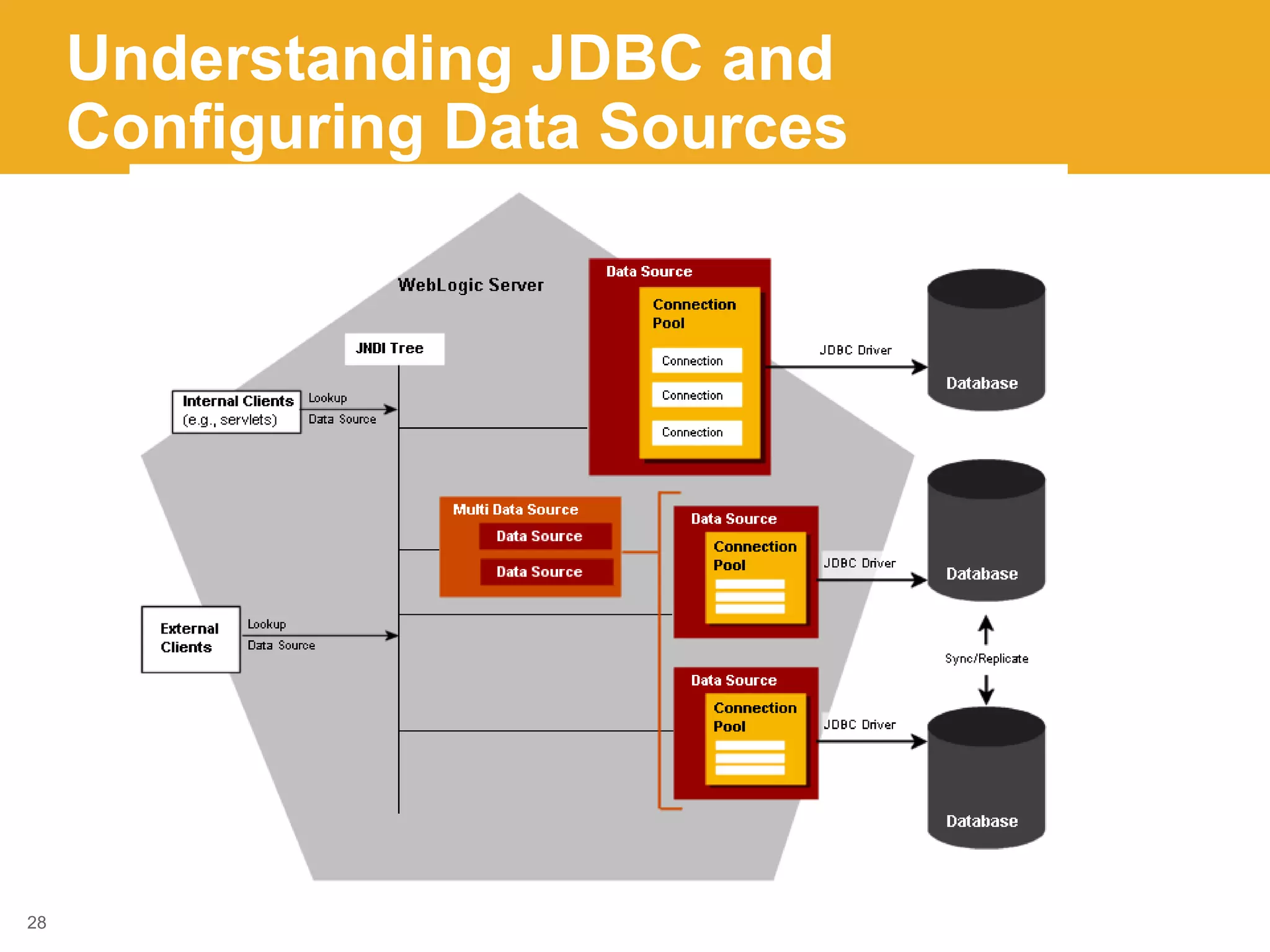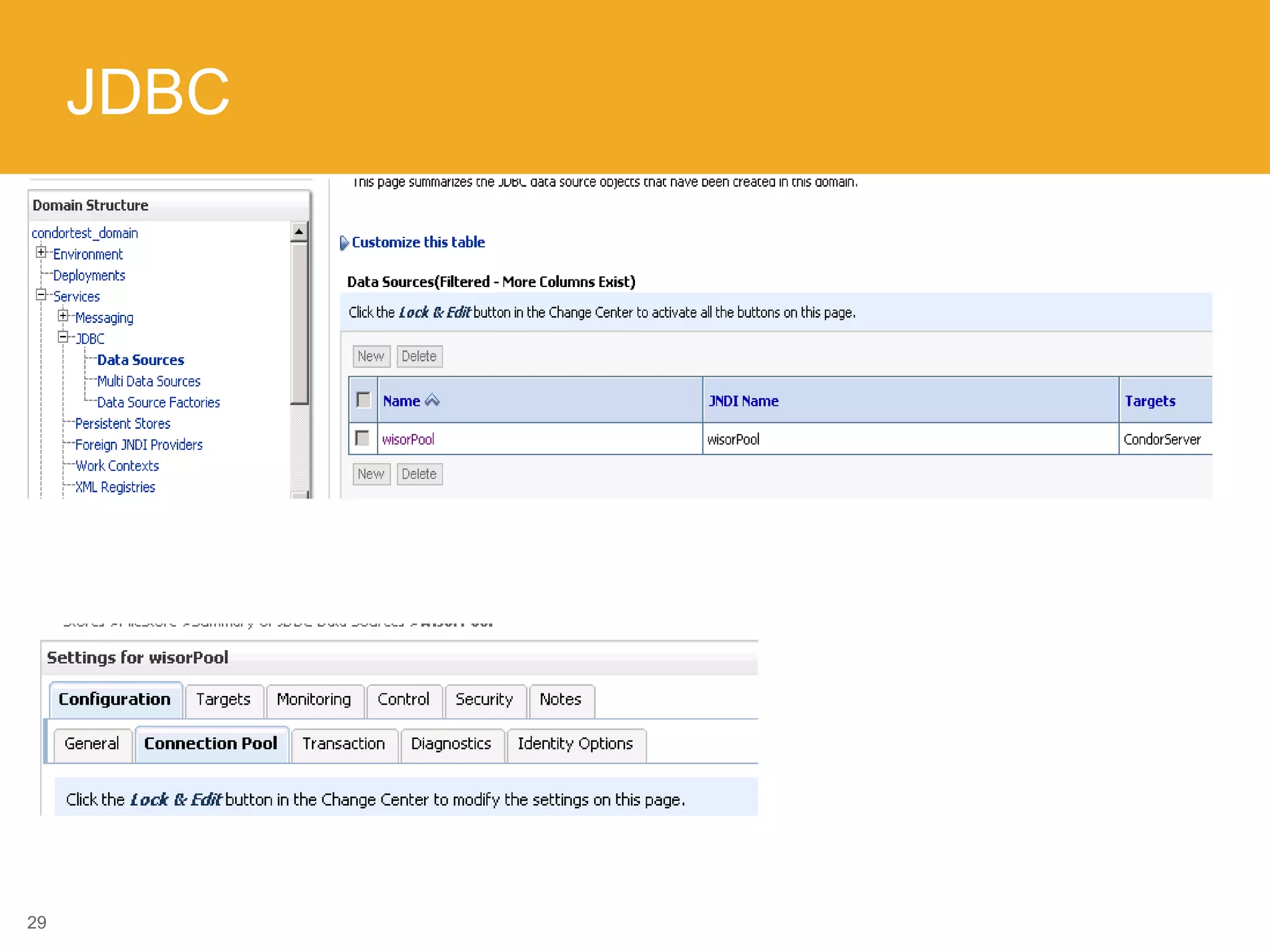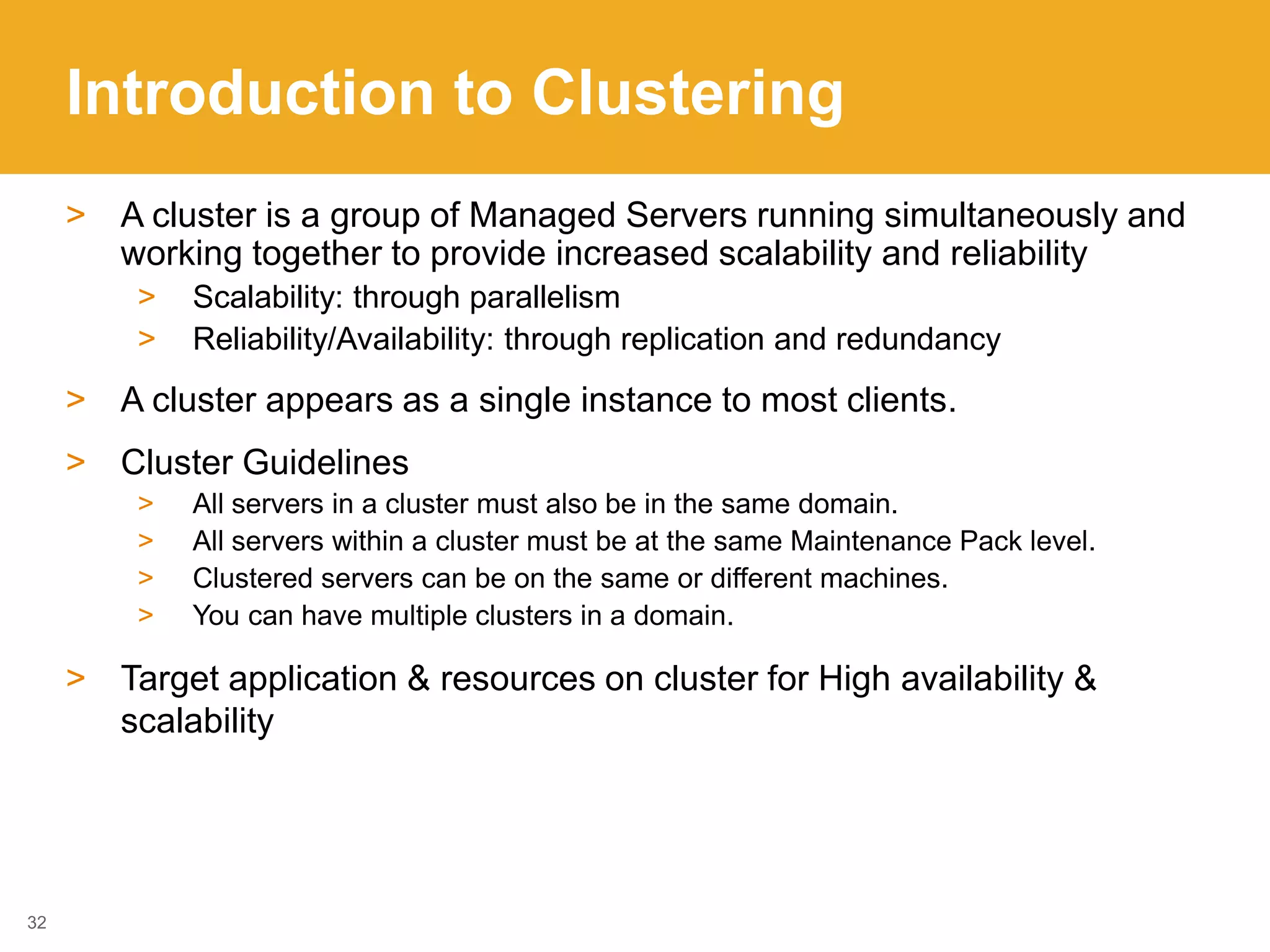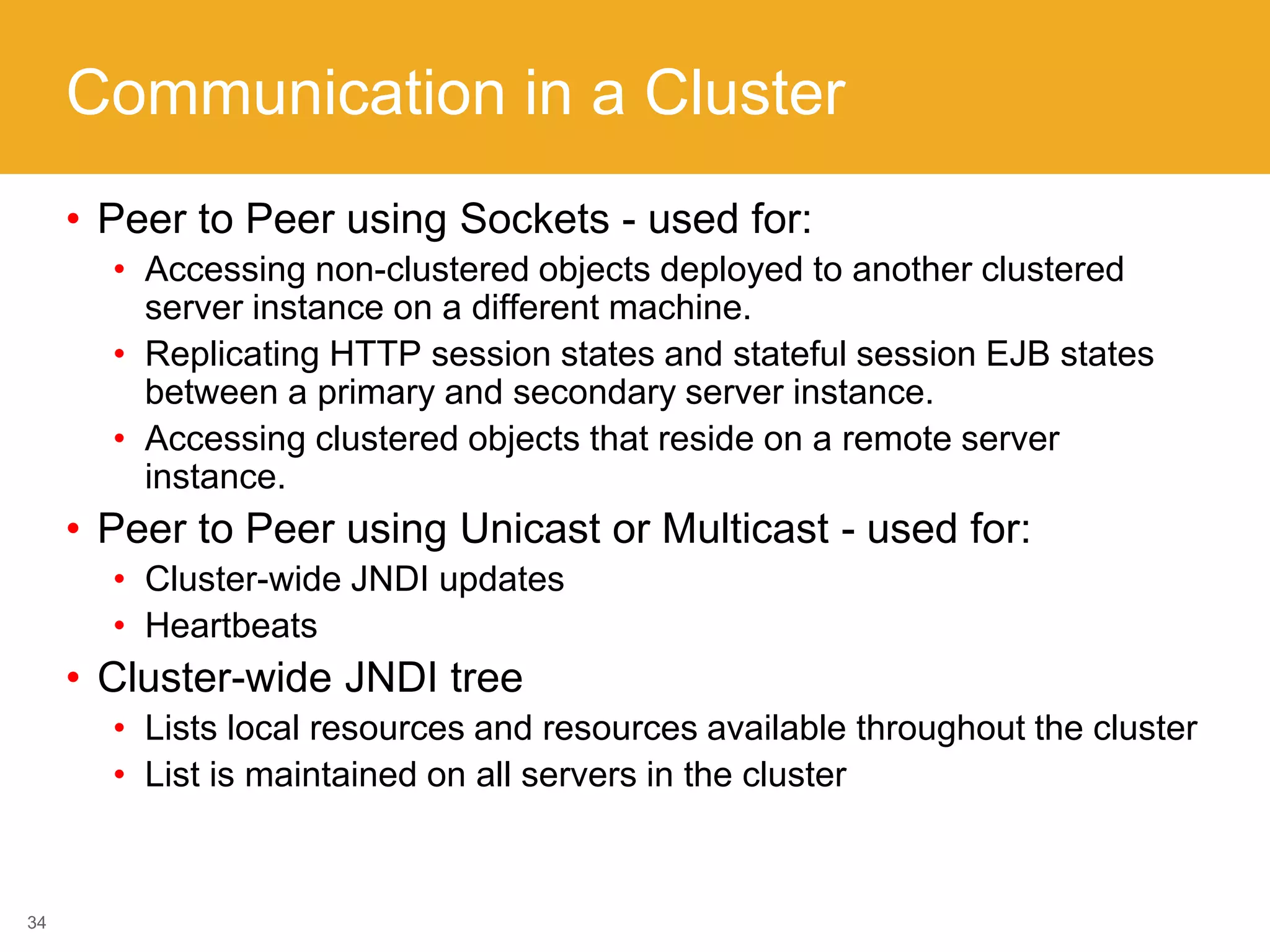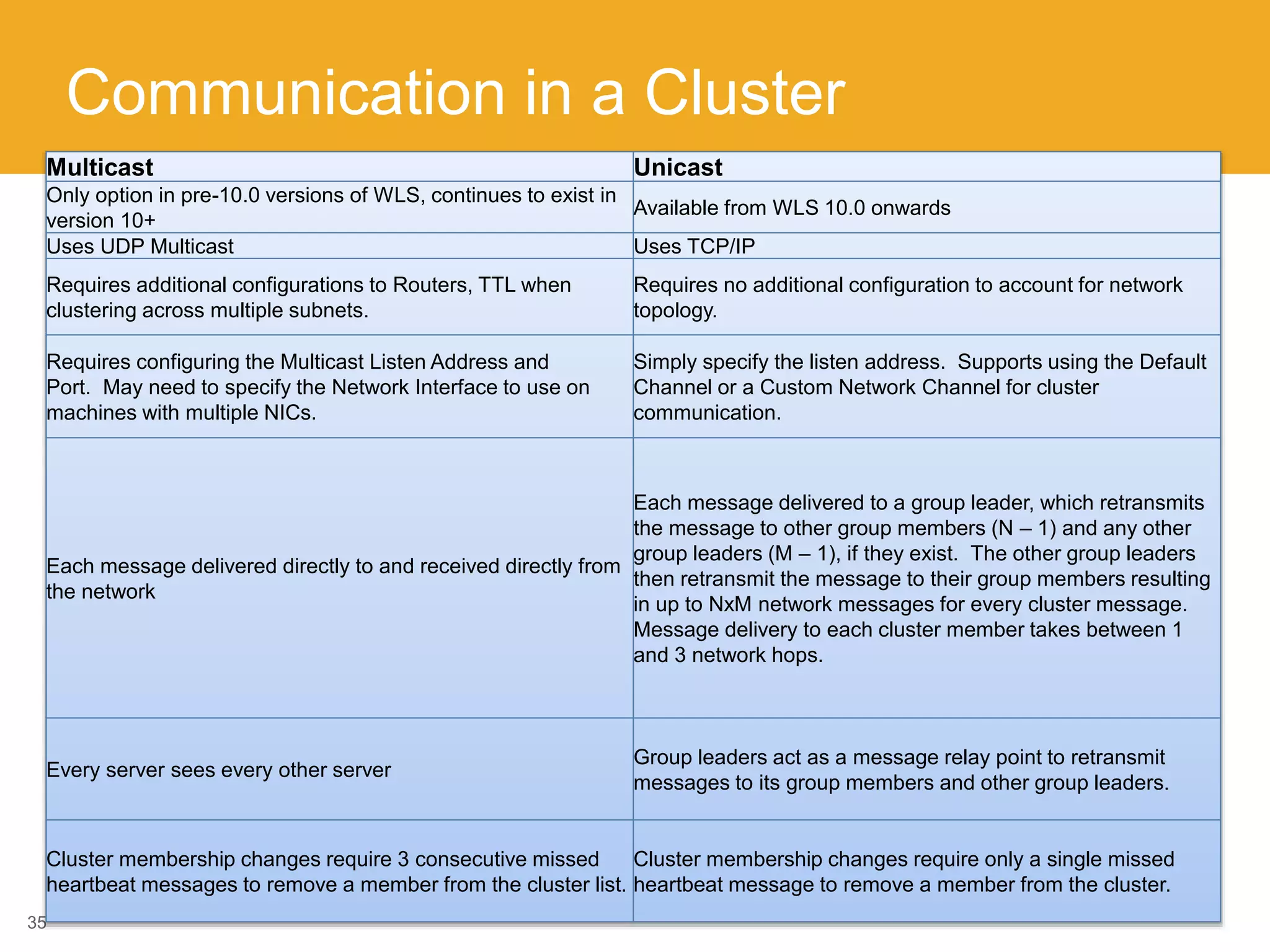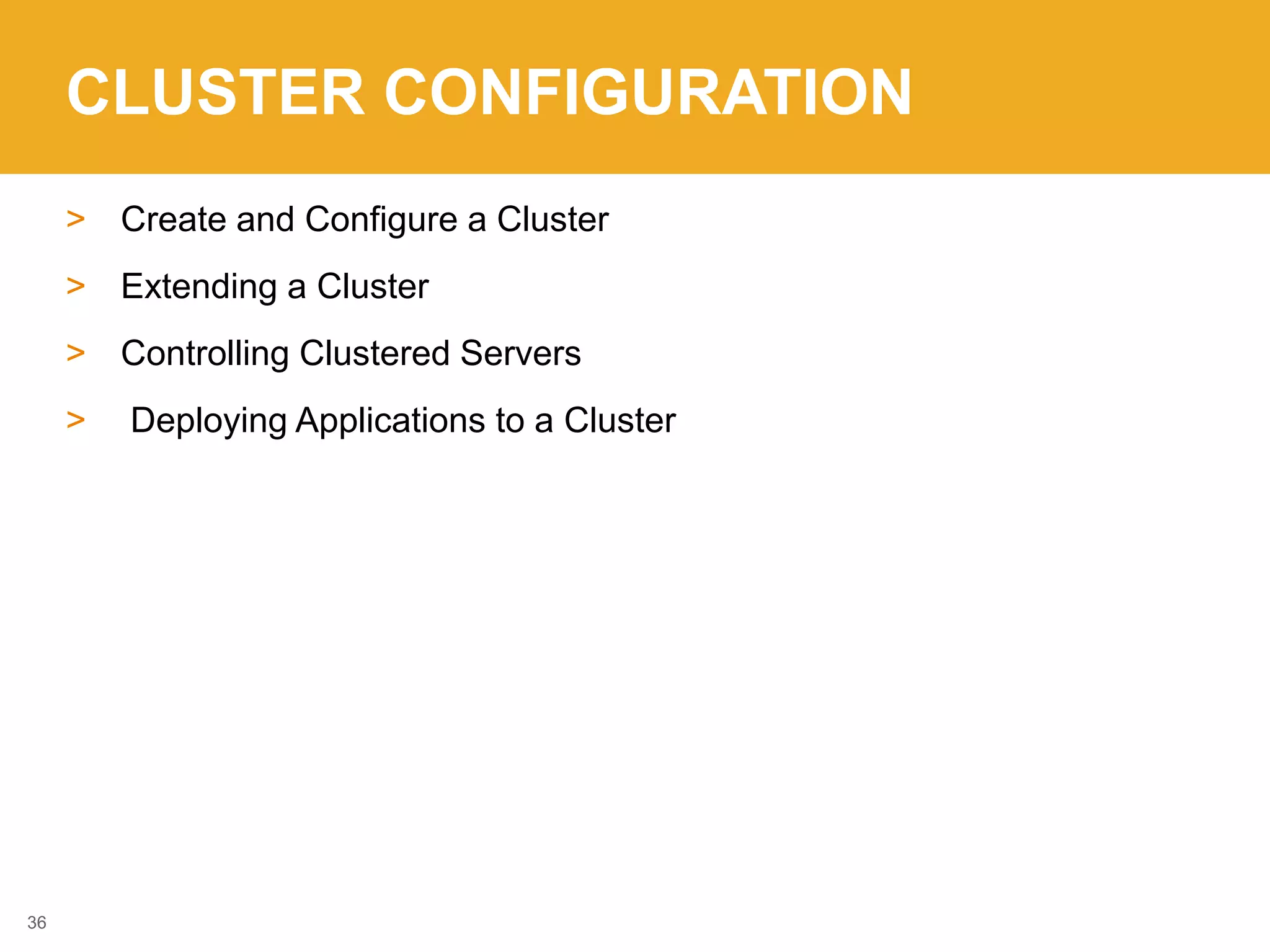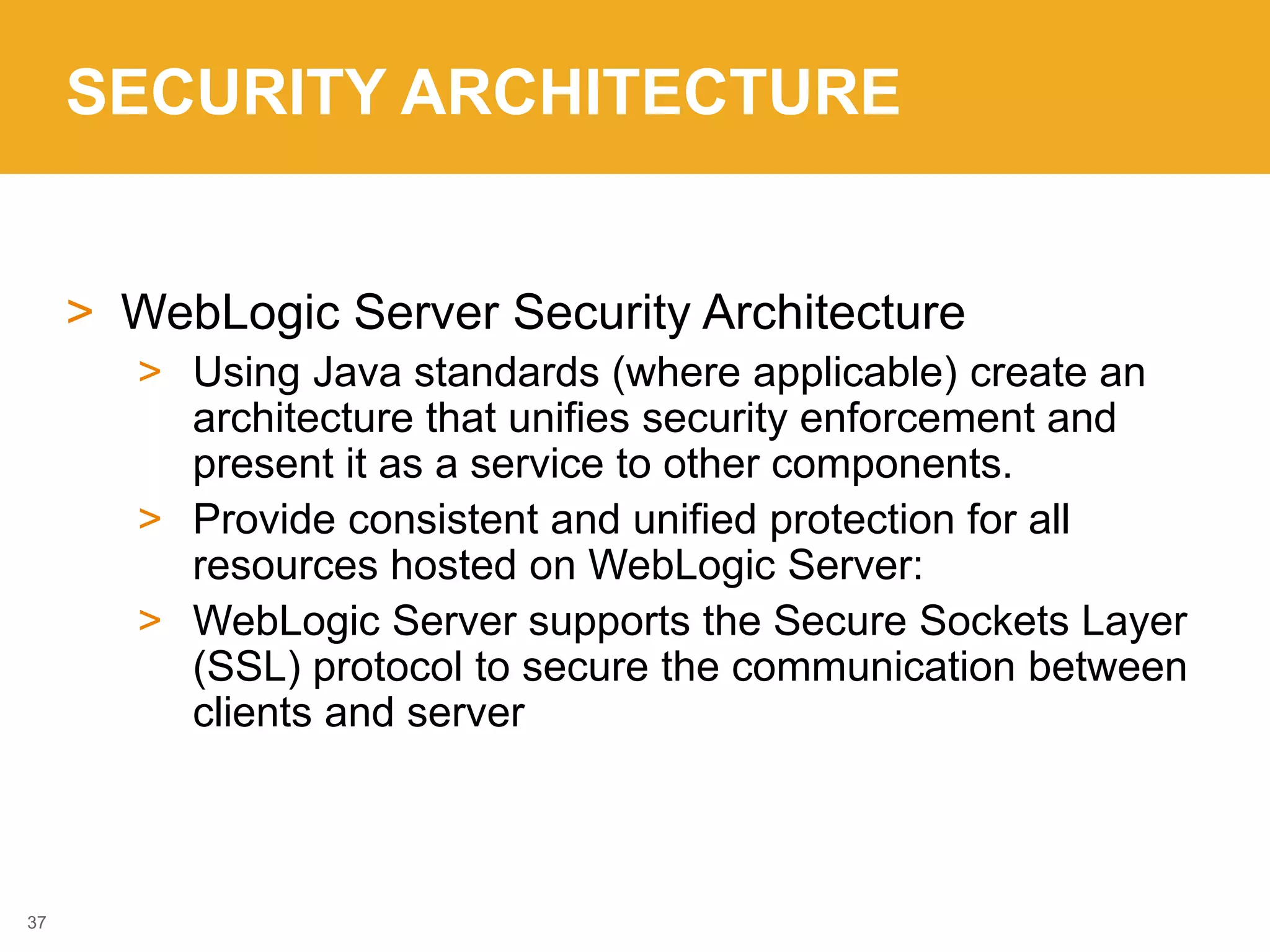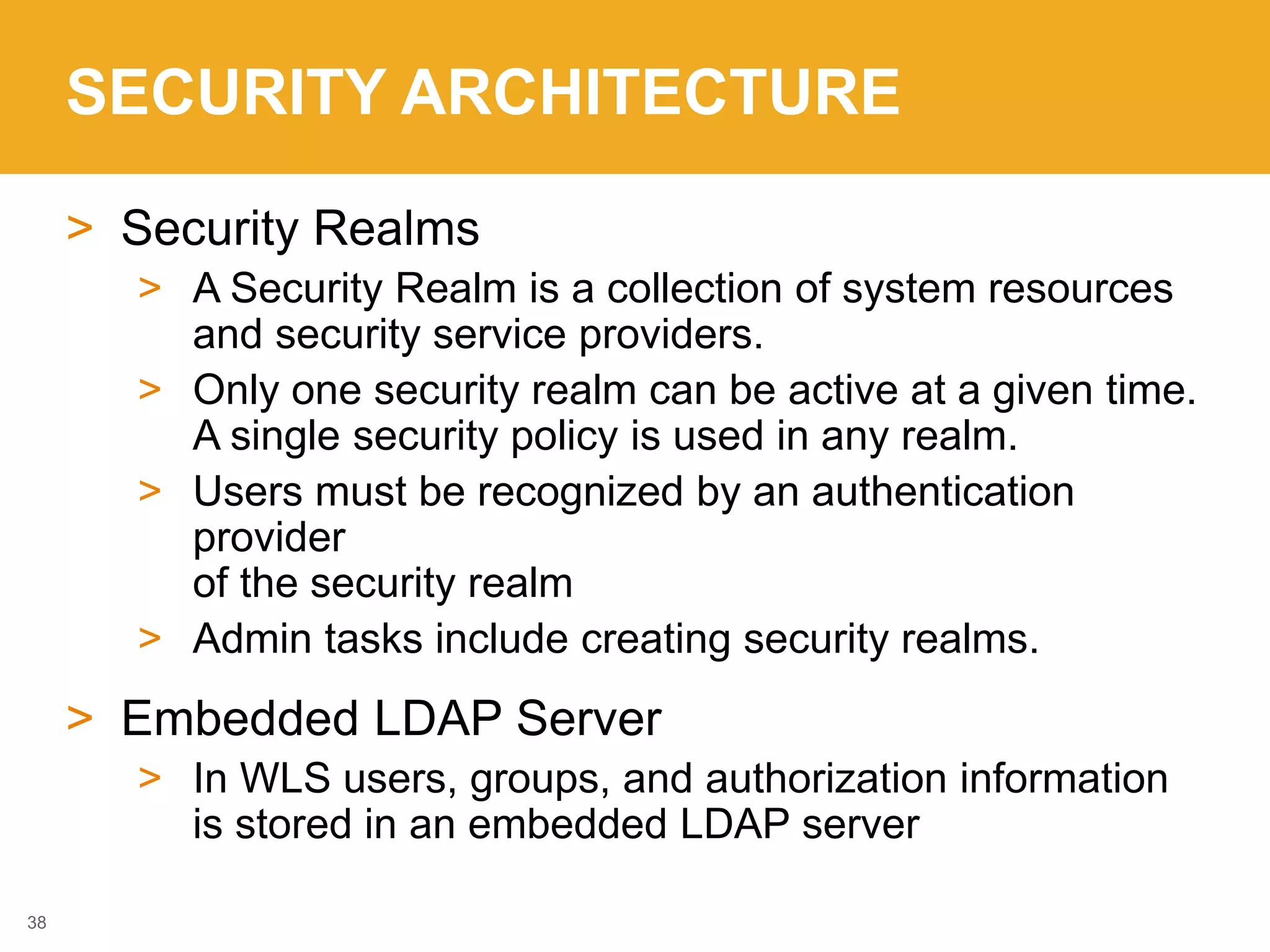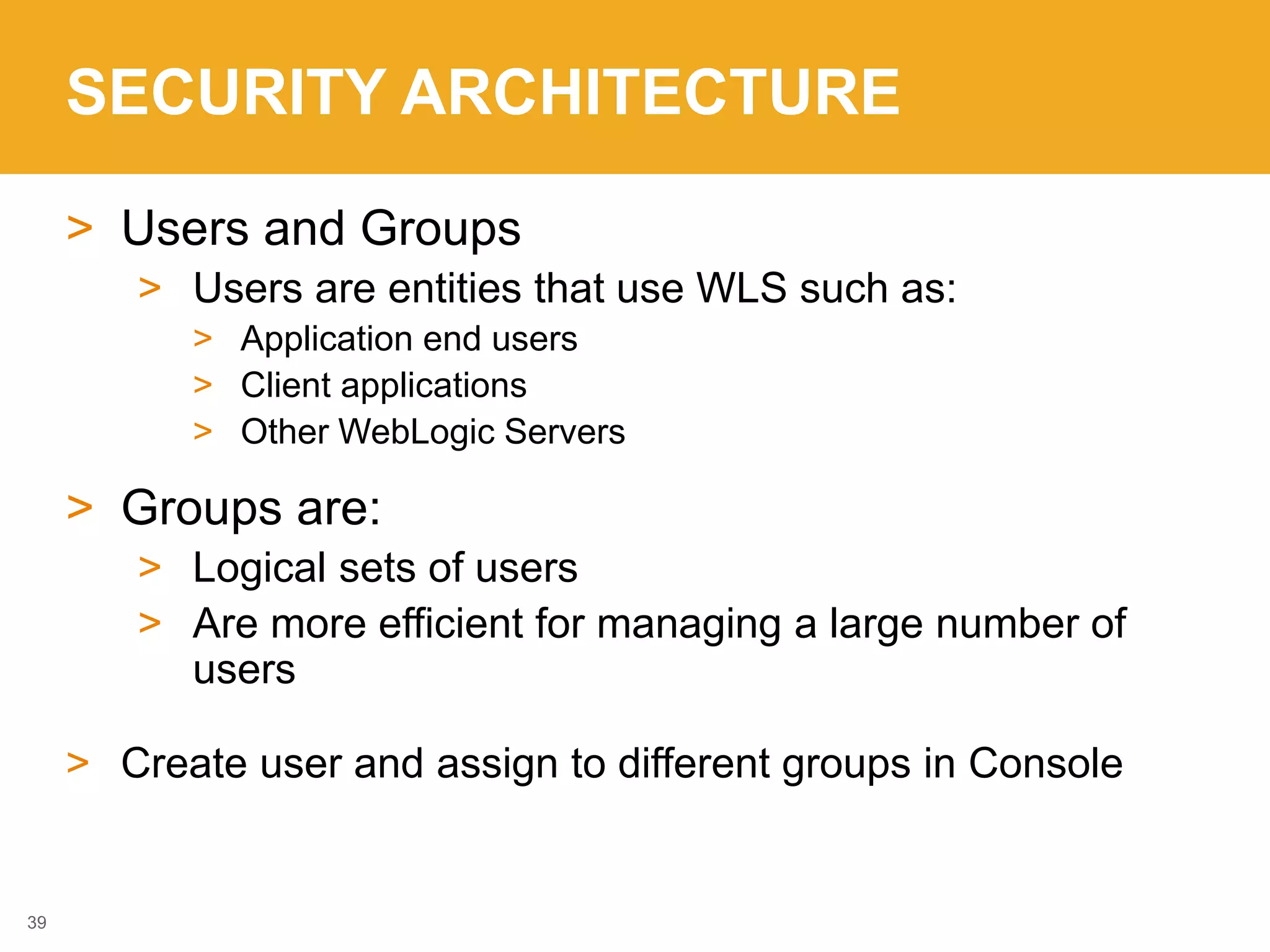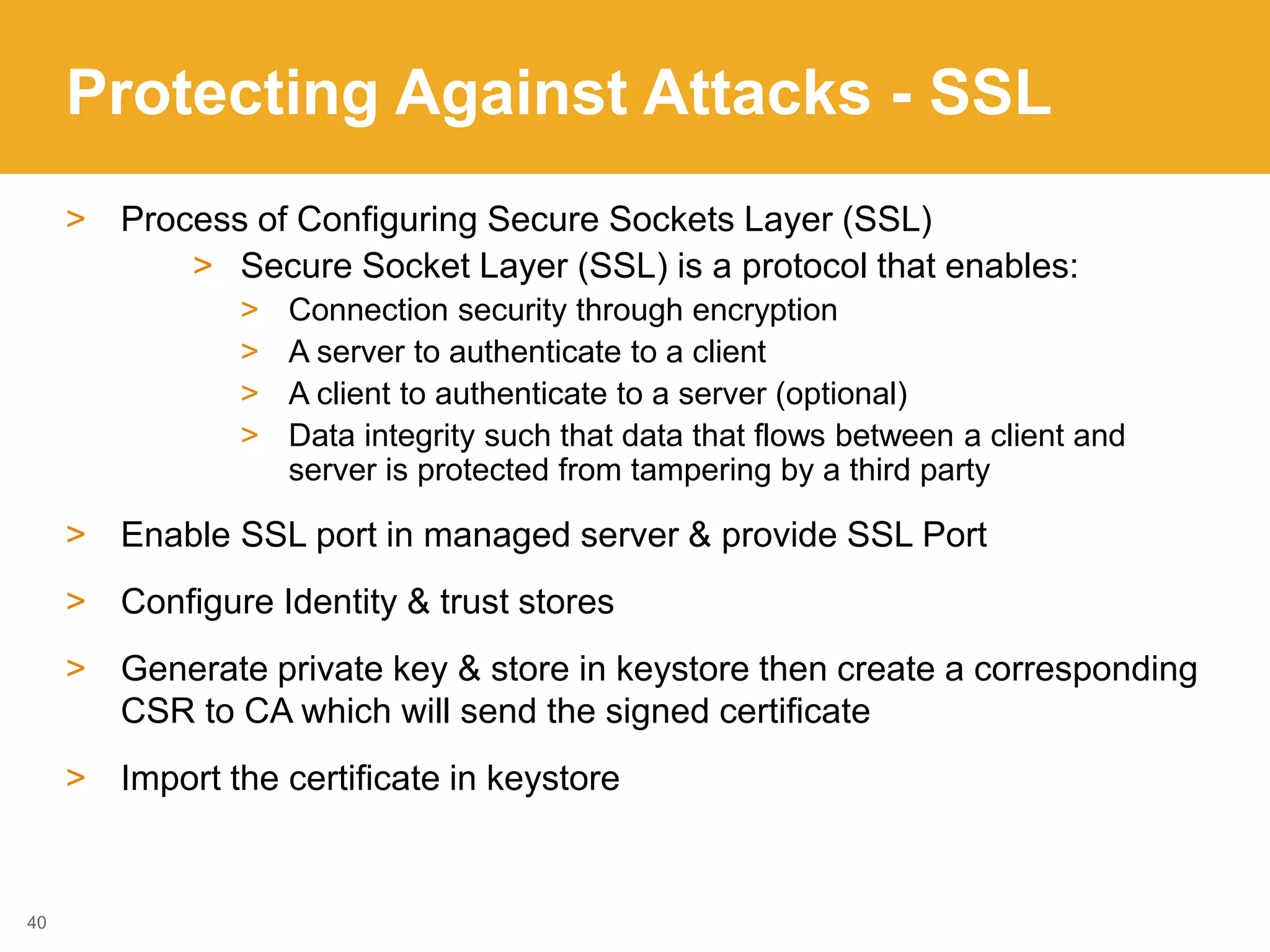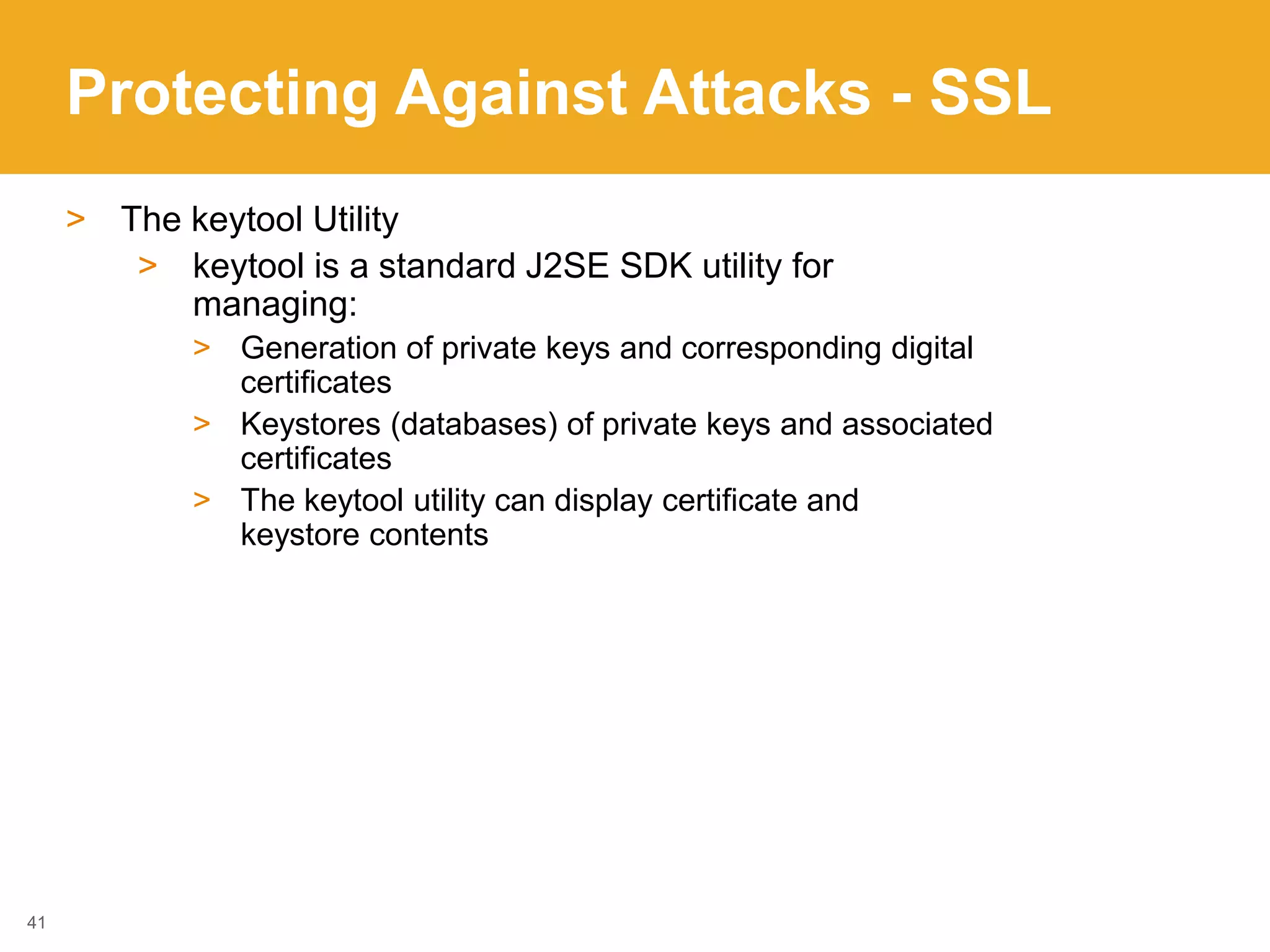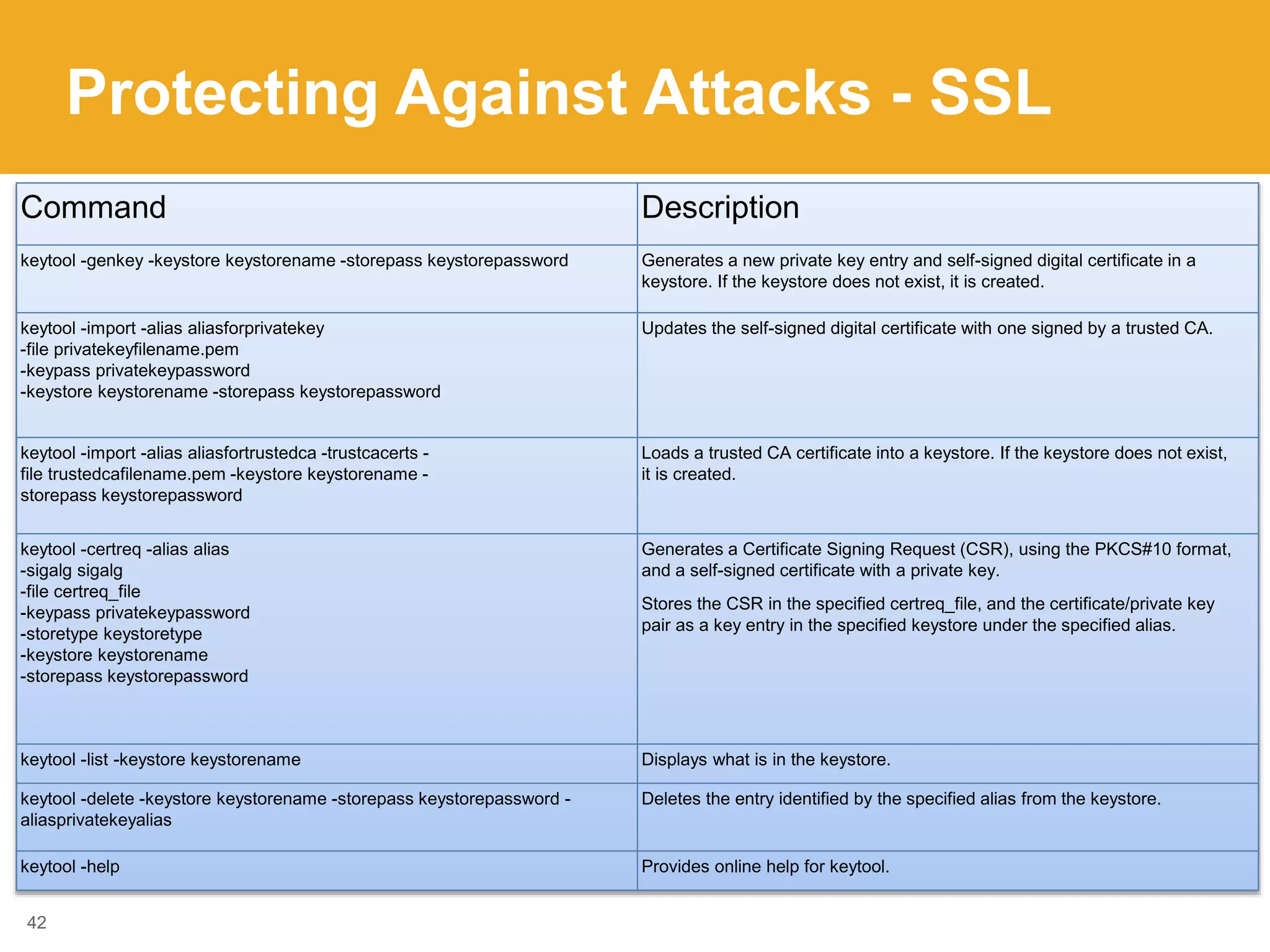The document provides comprehensive guidance on Oracle WebLogic Application Server, covering installation, configuration, and deployment of applications, along with key concepts like managed servers, administration, clustering, and logging. It outlines how to manage domains and servers using the administration console and WebLogic Scripting Tool (WLST), as well as important features including JDBC, JMS configuration, and security measures. Additionally, it highlights the versions of WebLogic Server and offers best practices for efficient server management and application deployment.

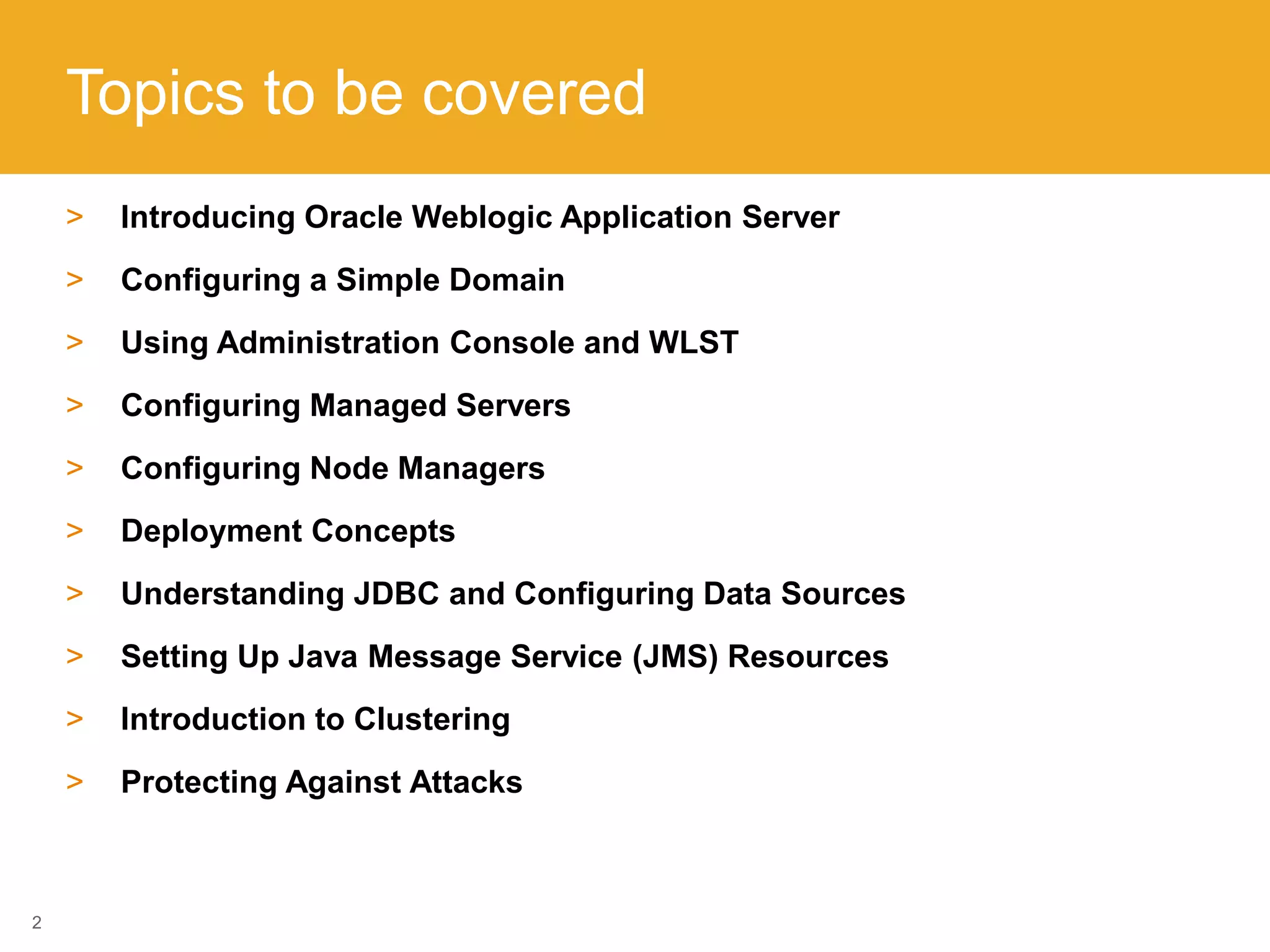
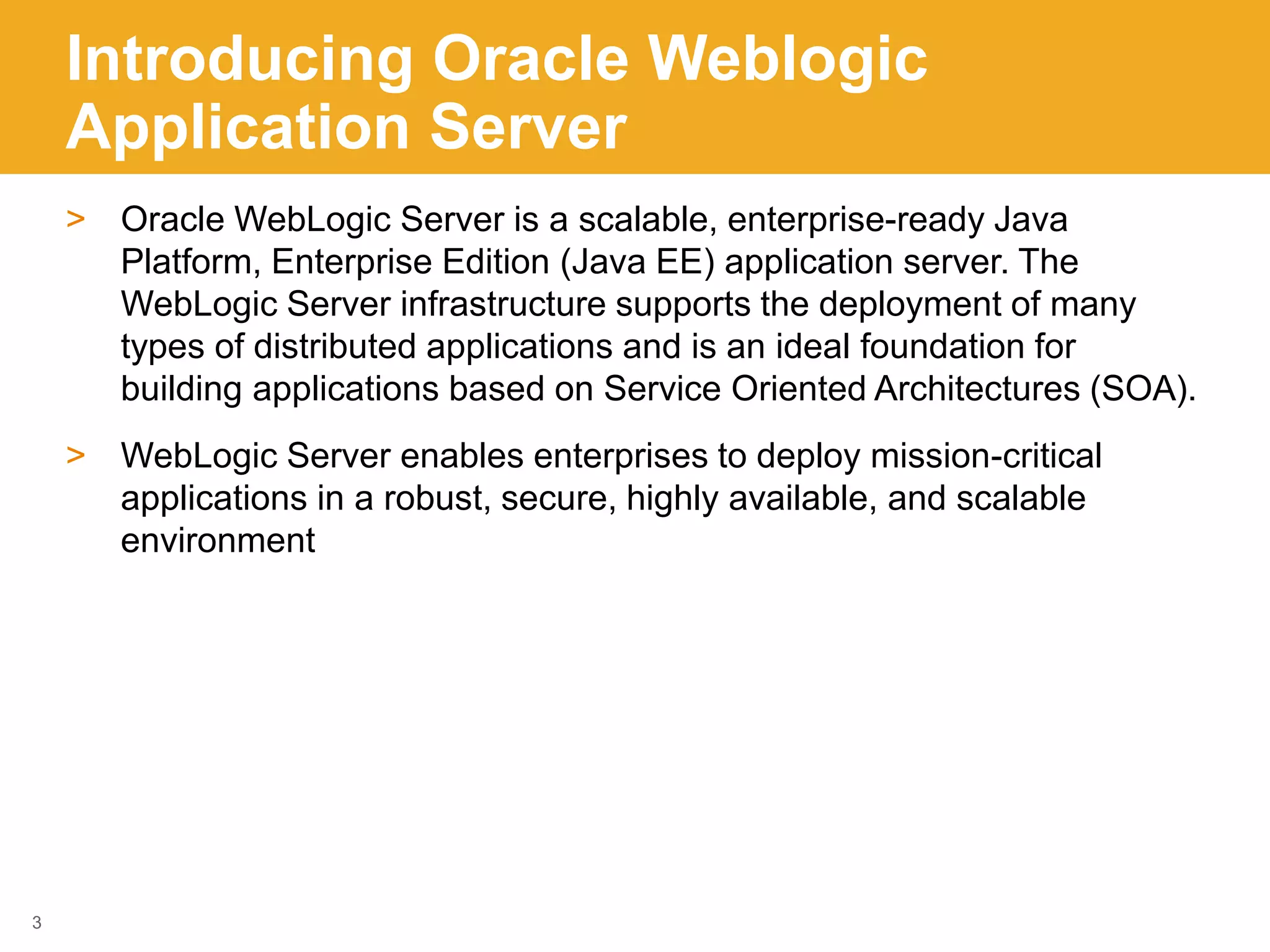
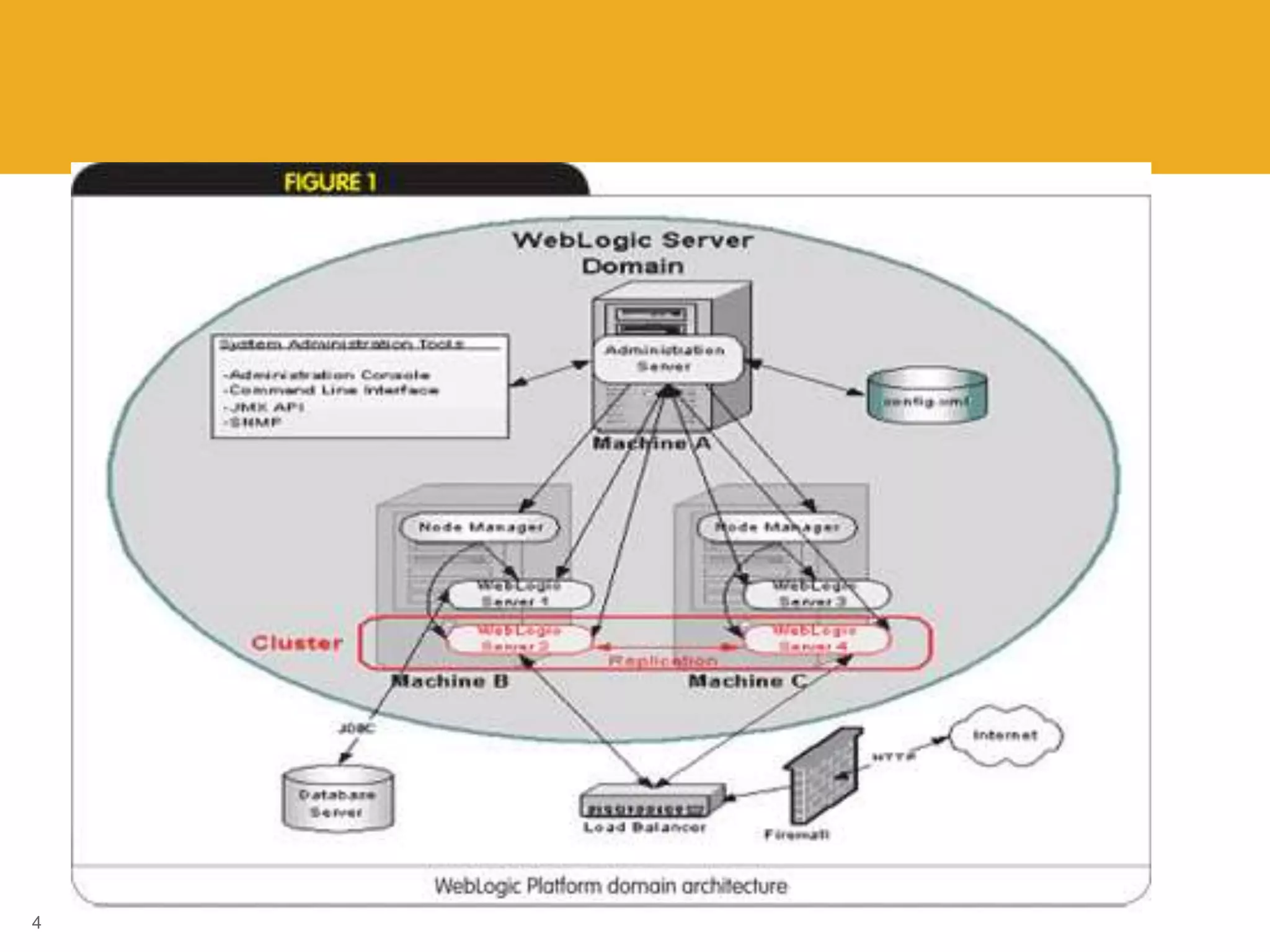
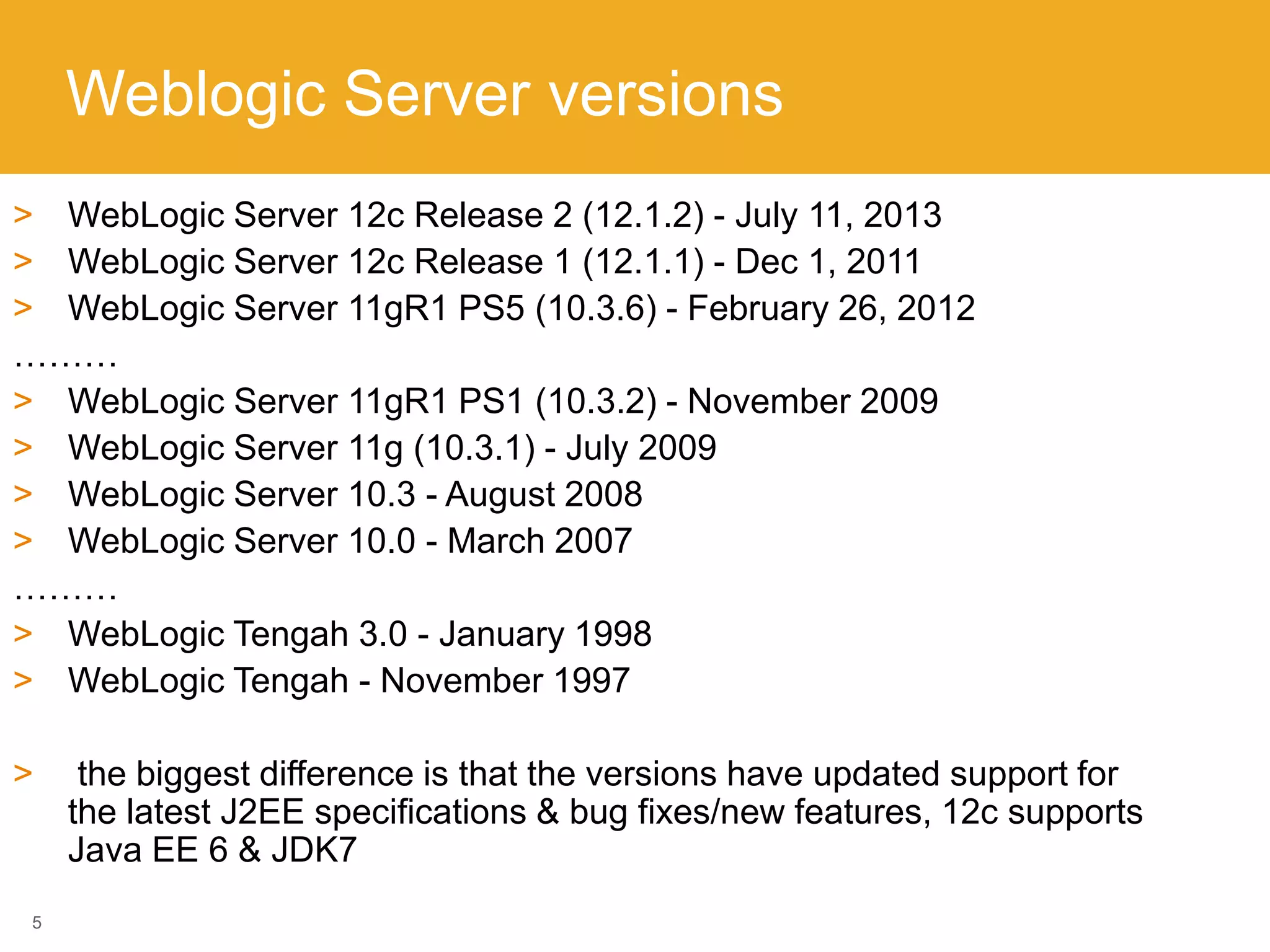
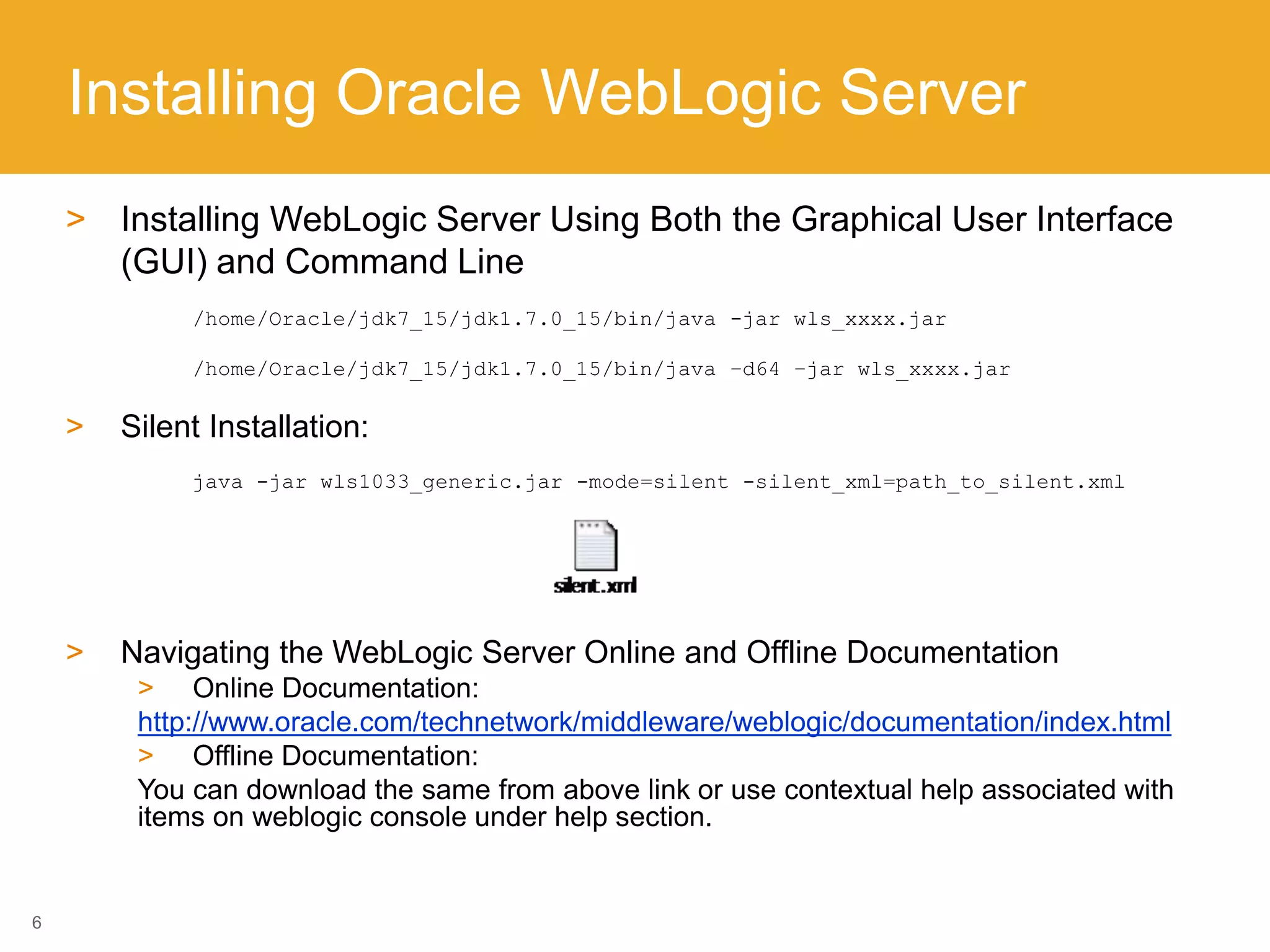
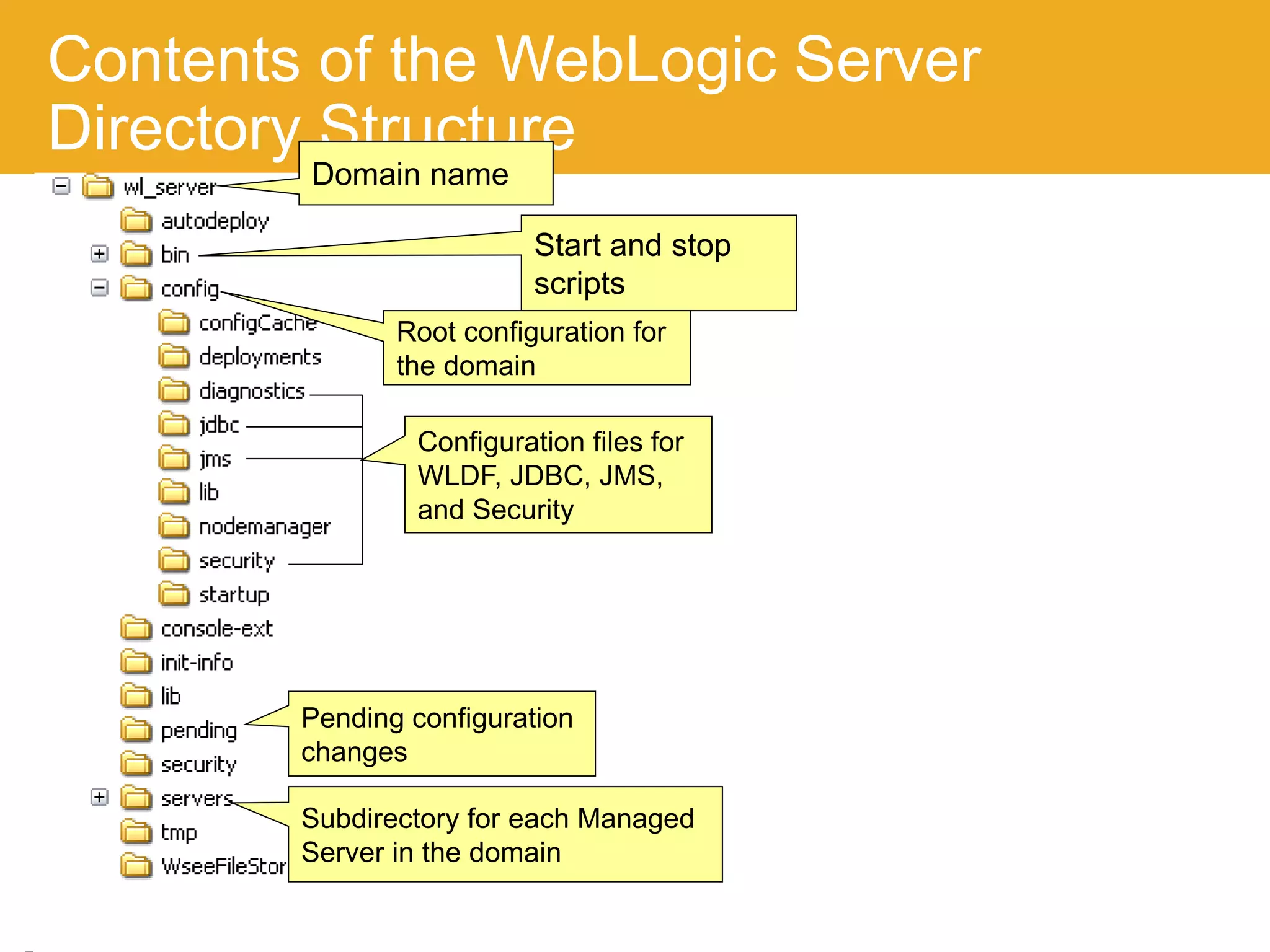
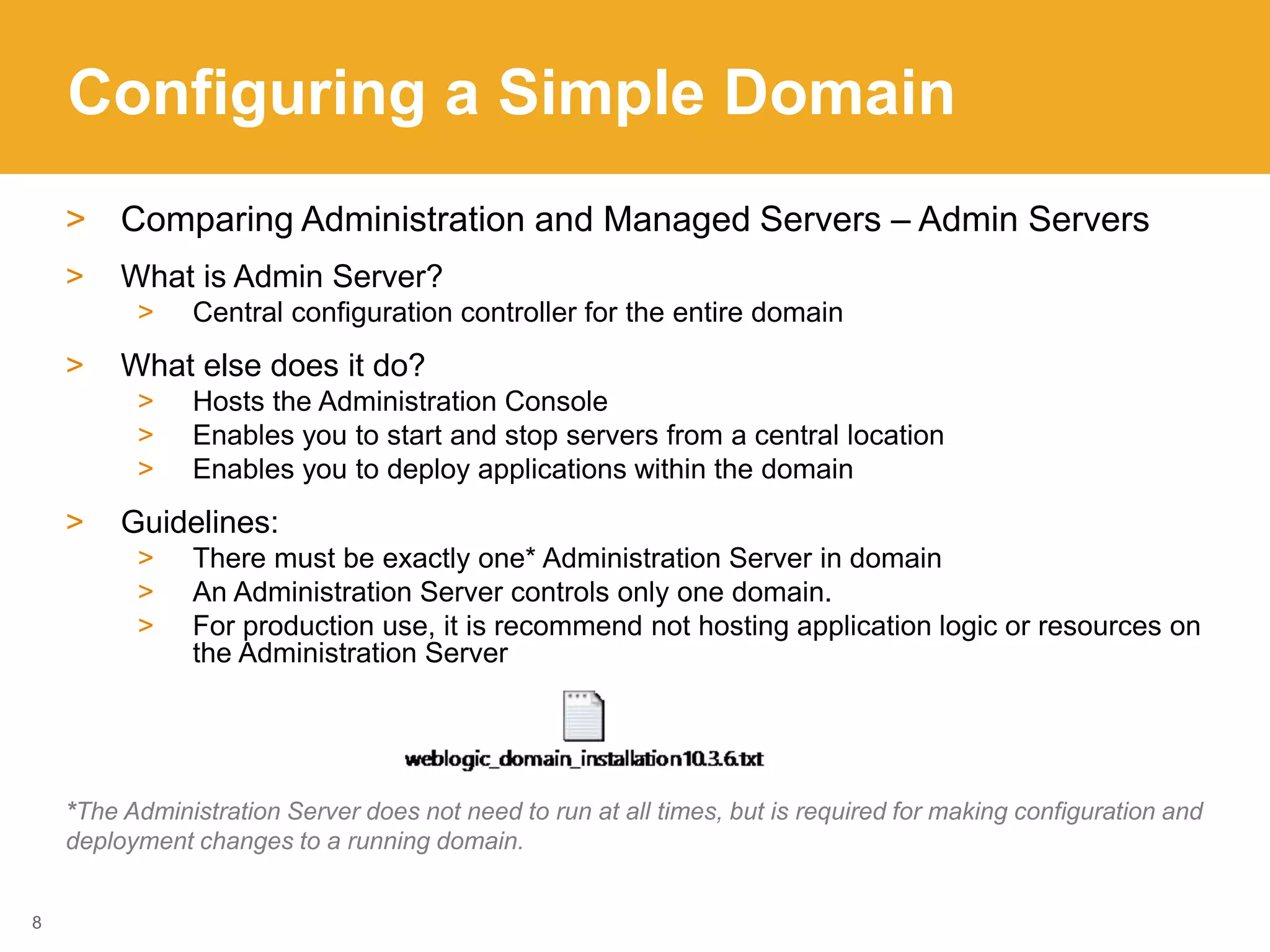
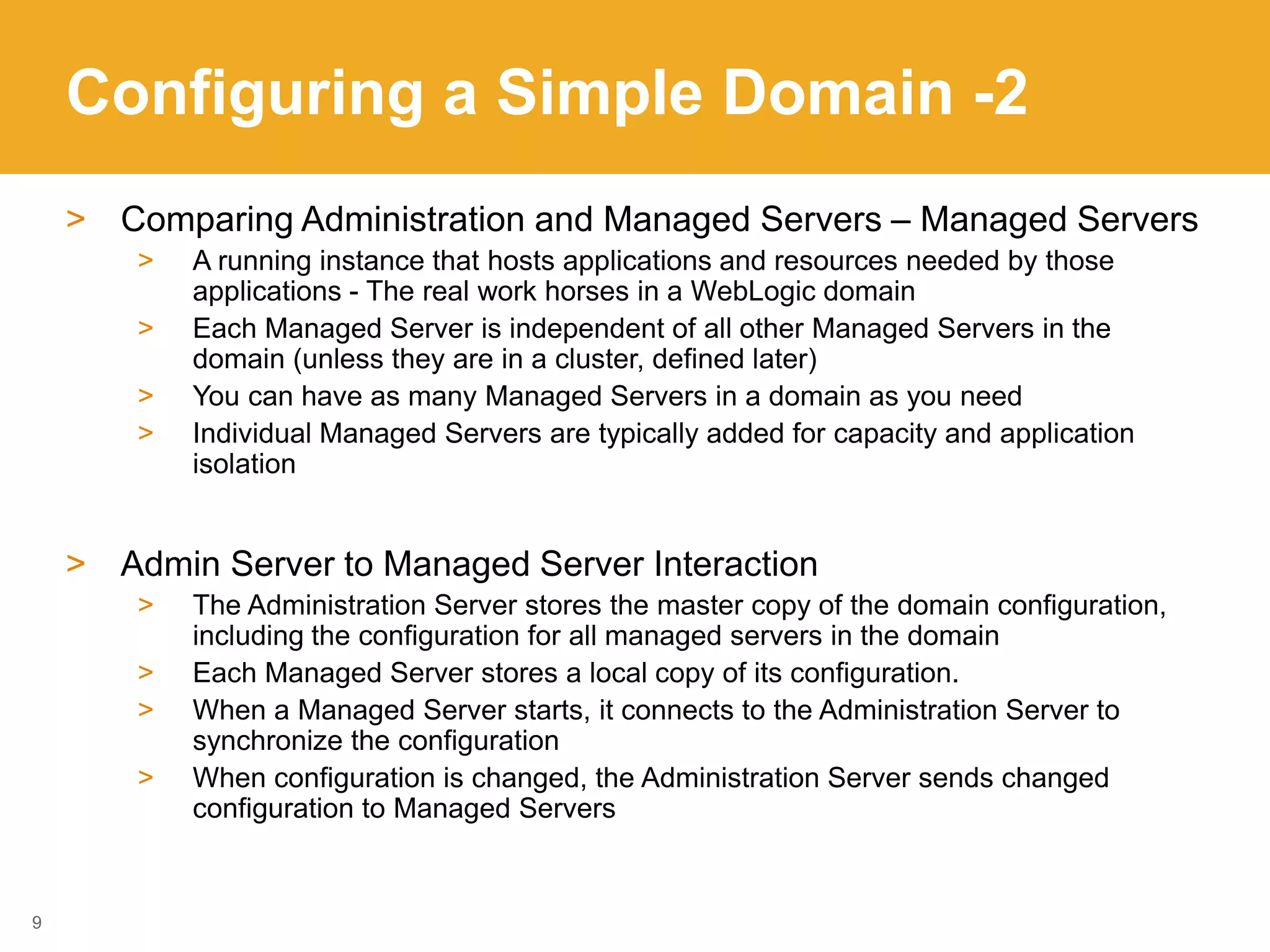
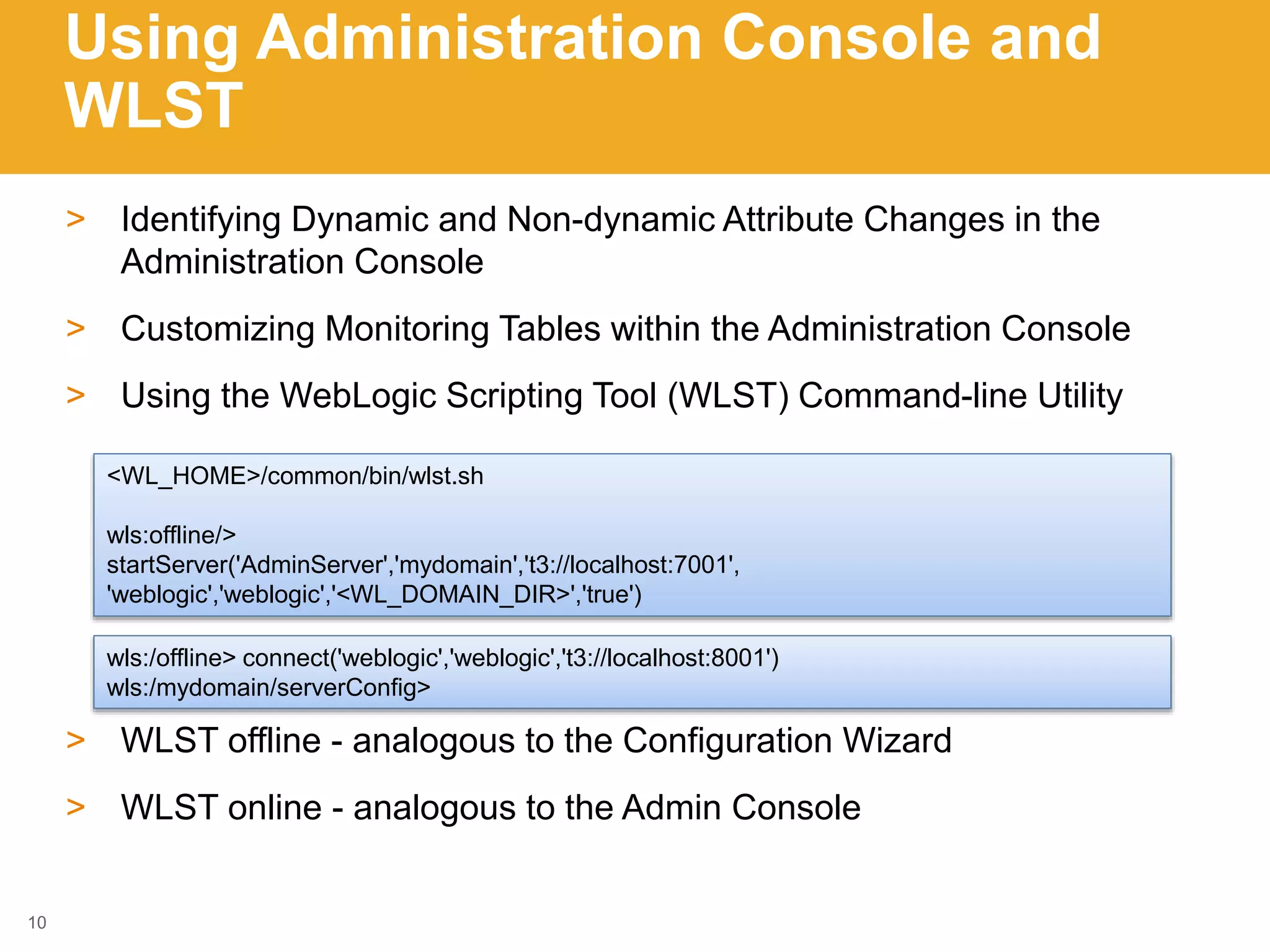

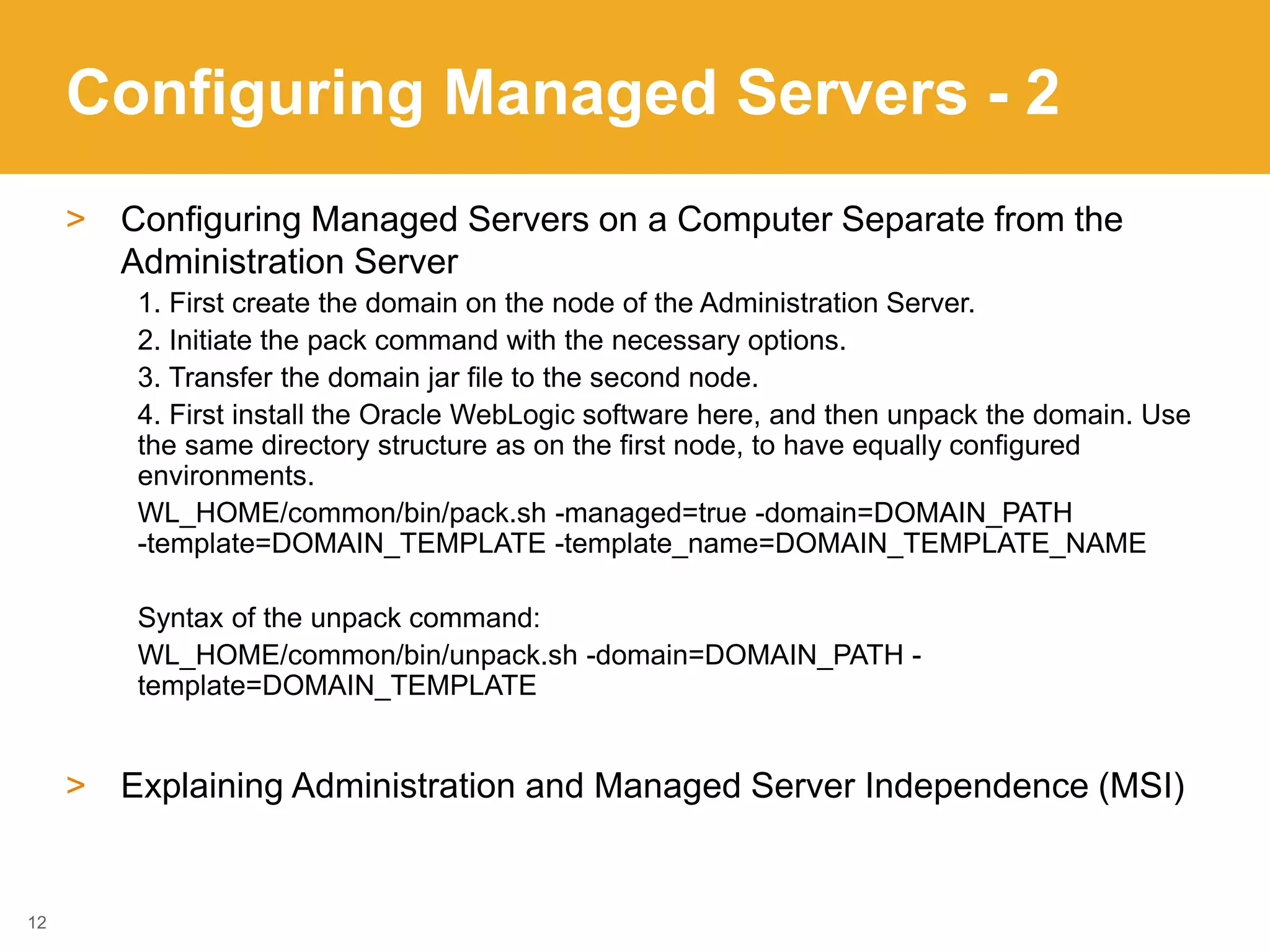
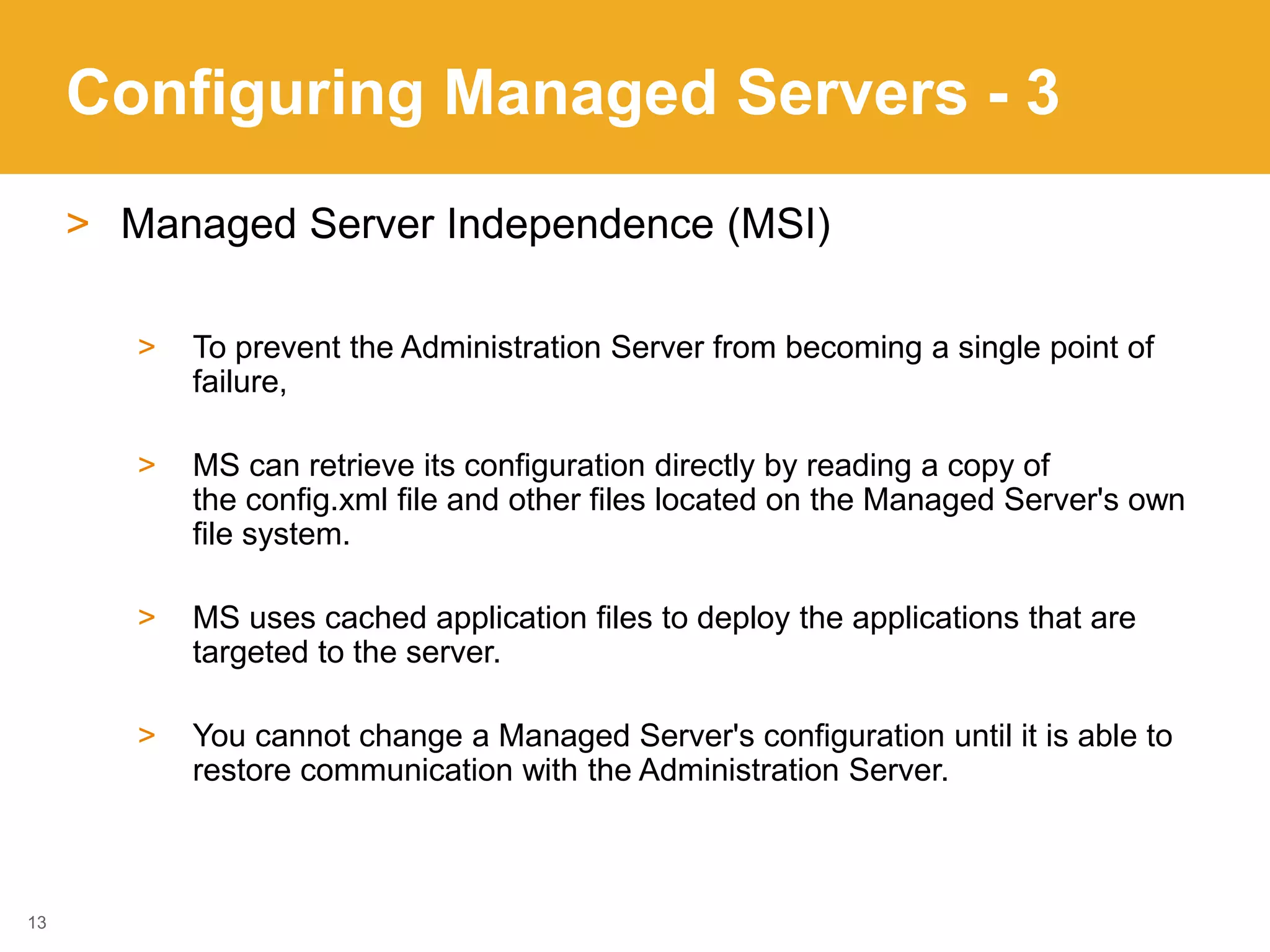
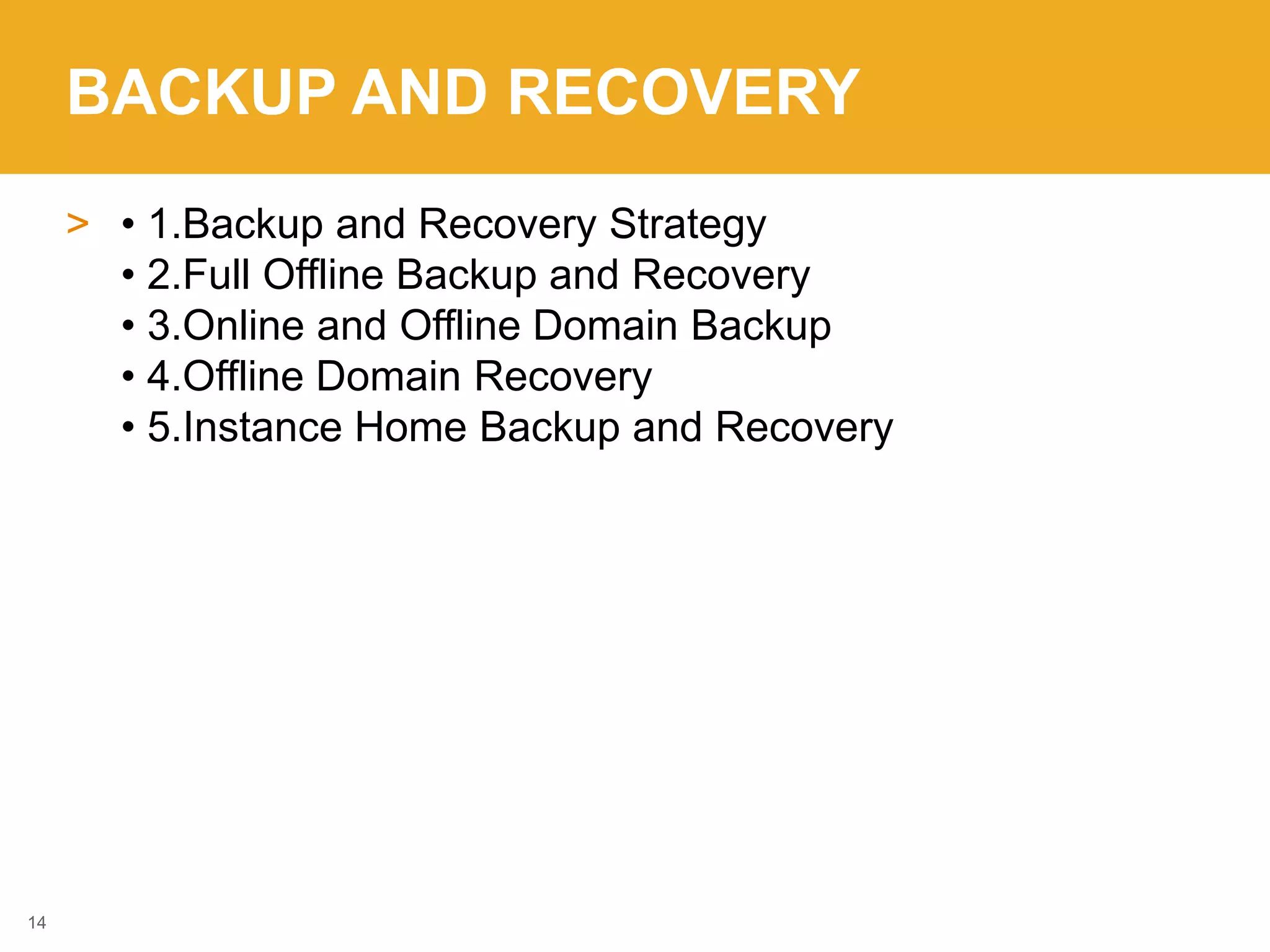
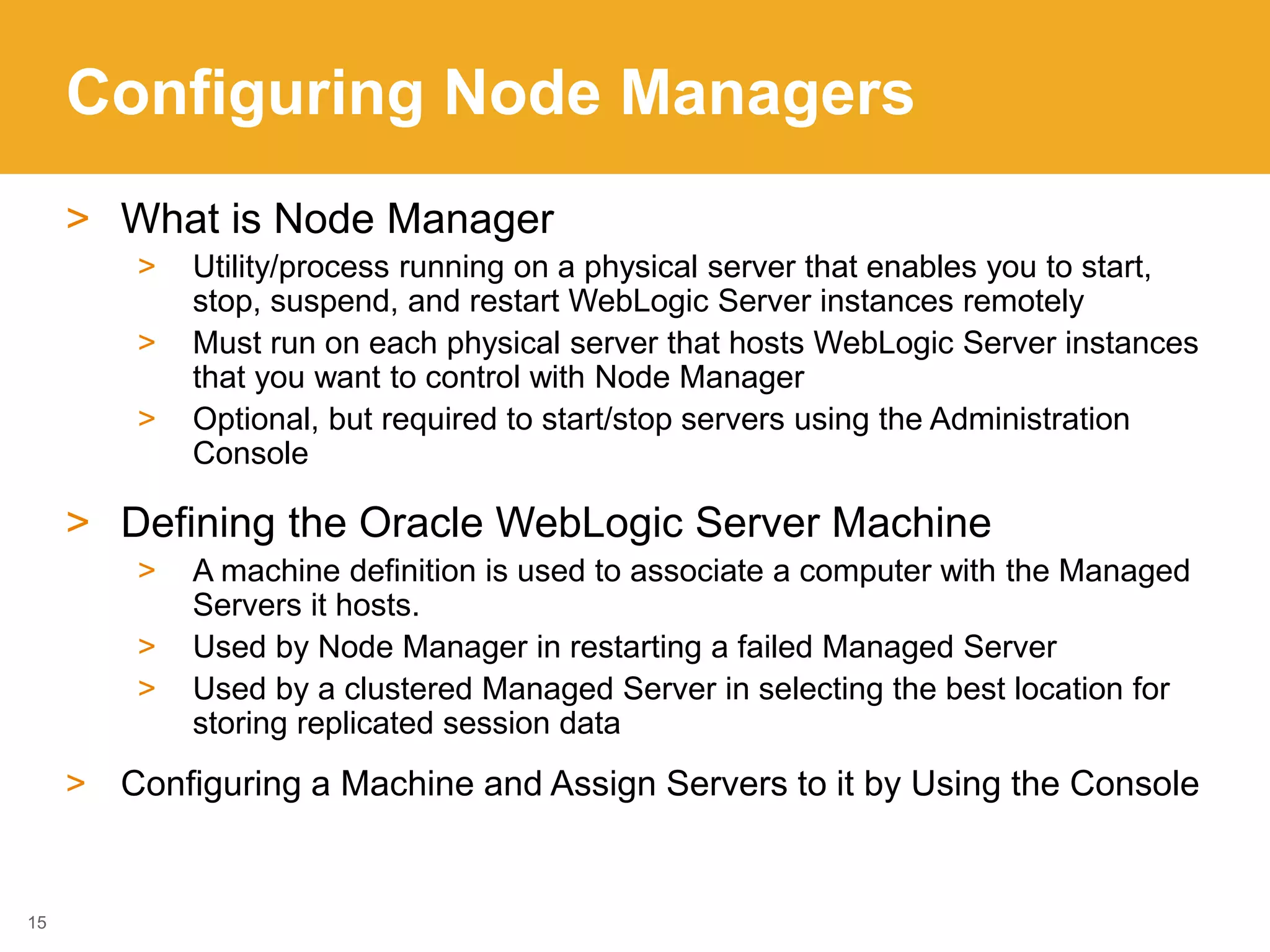
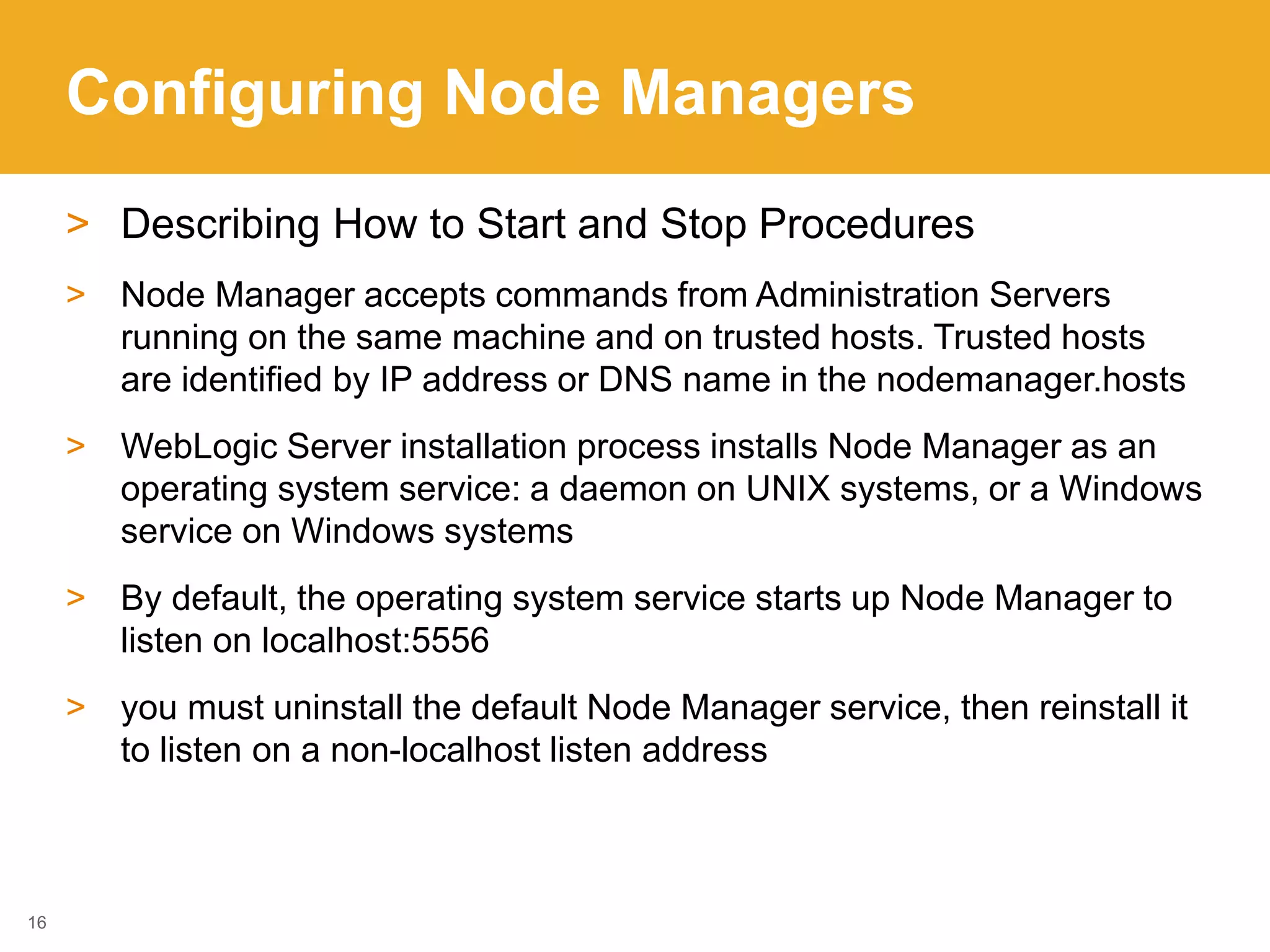
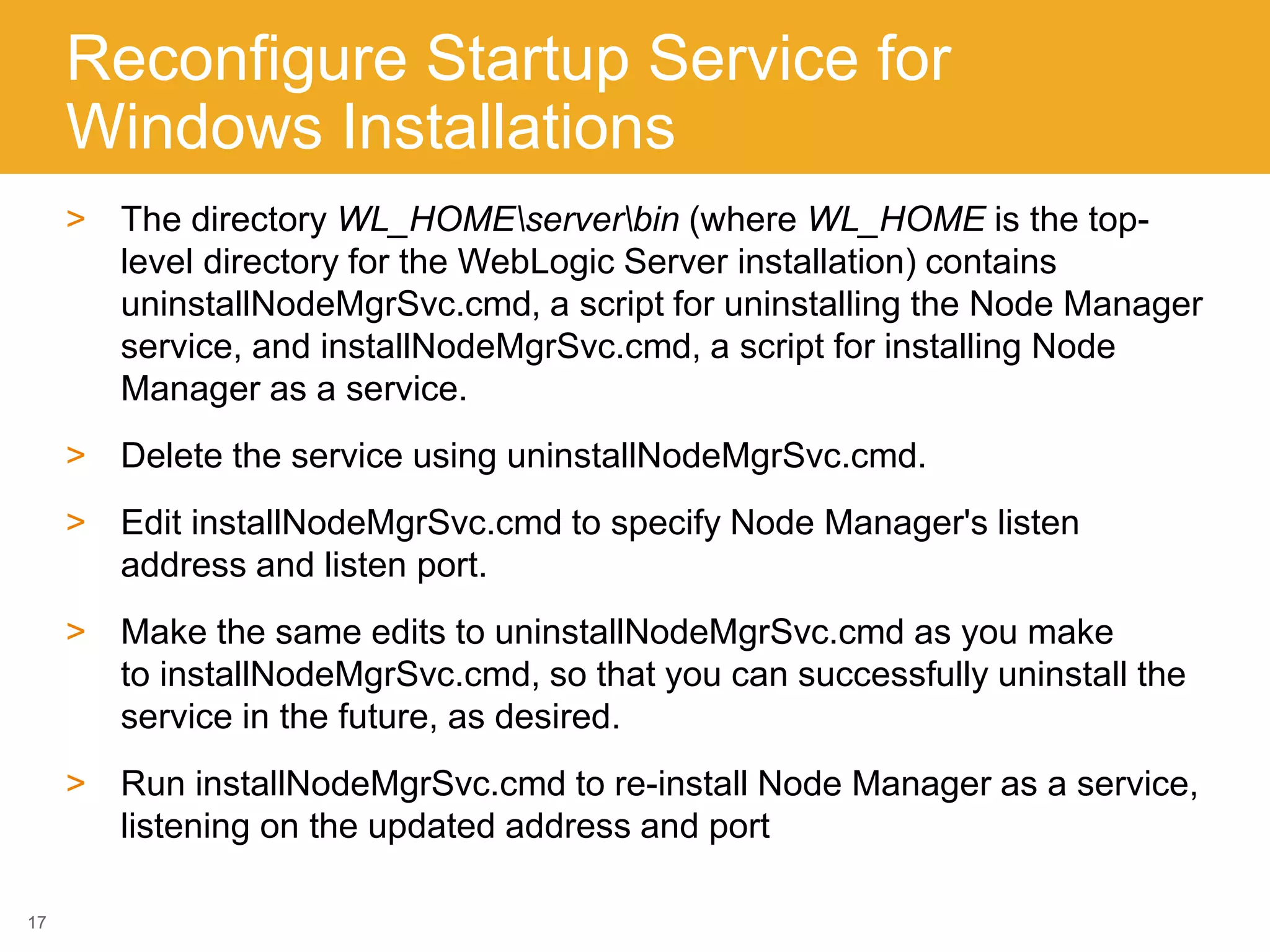
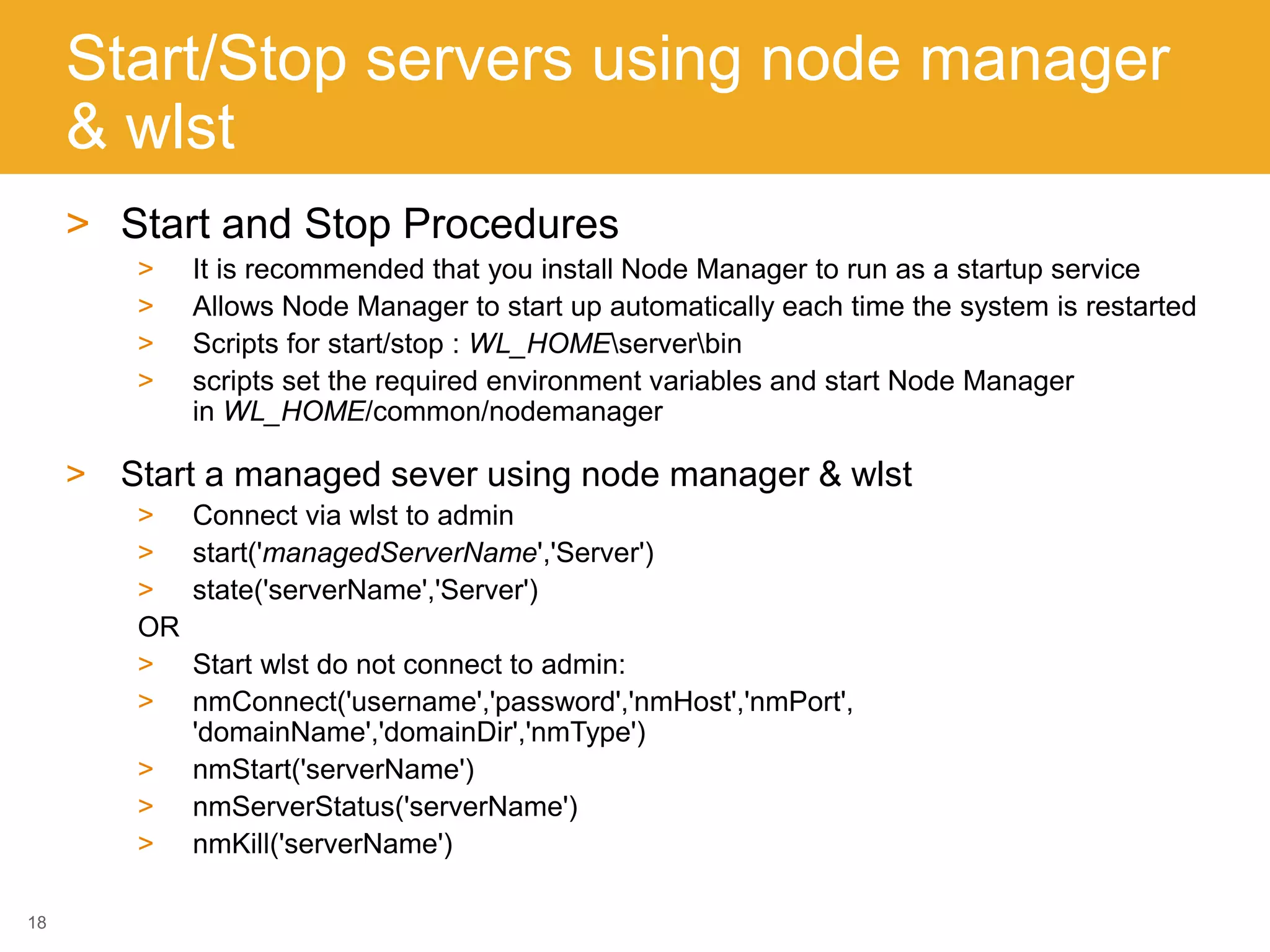
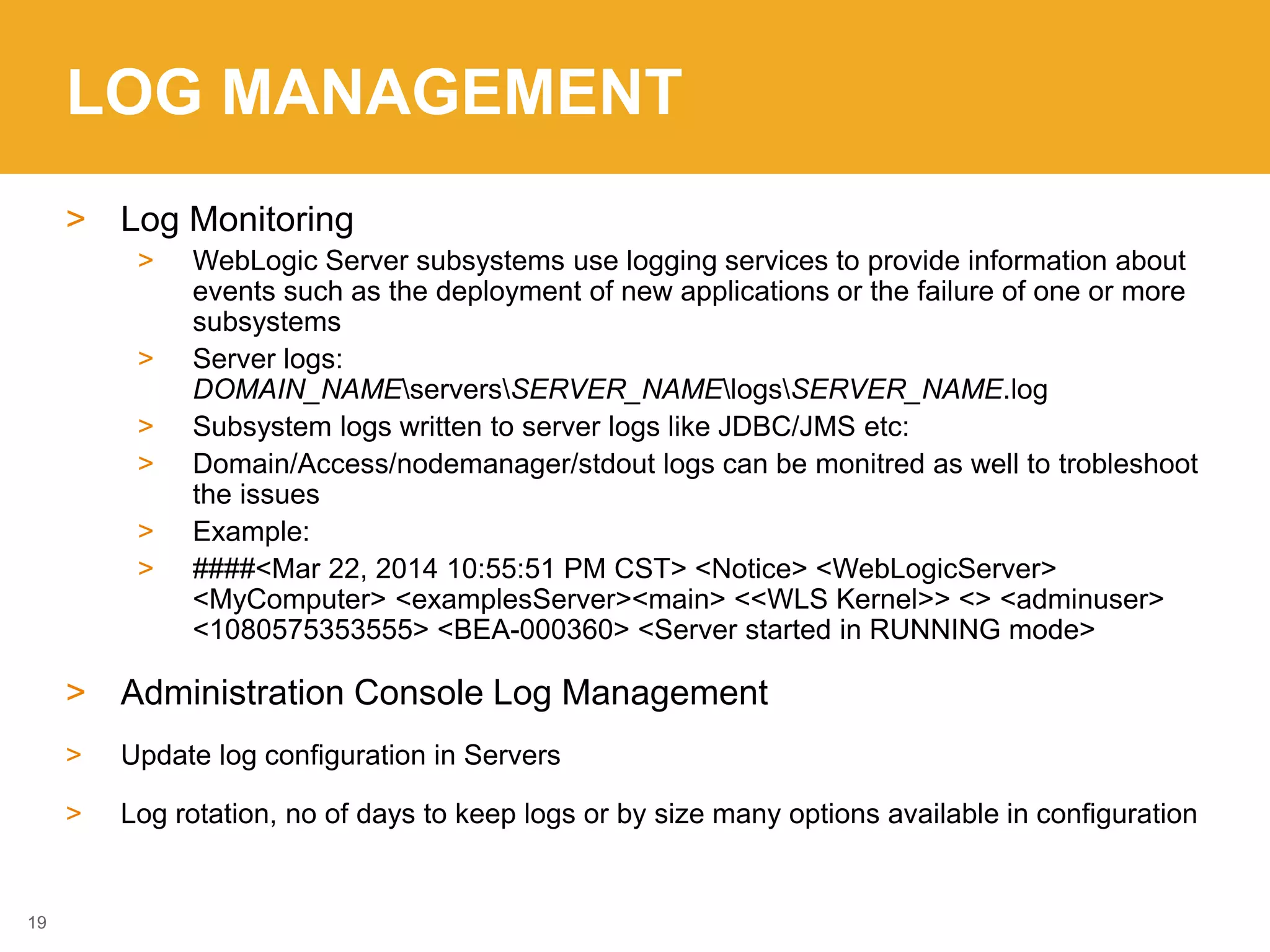
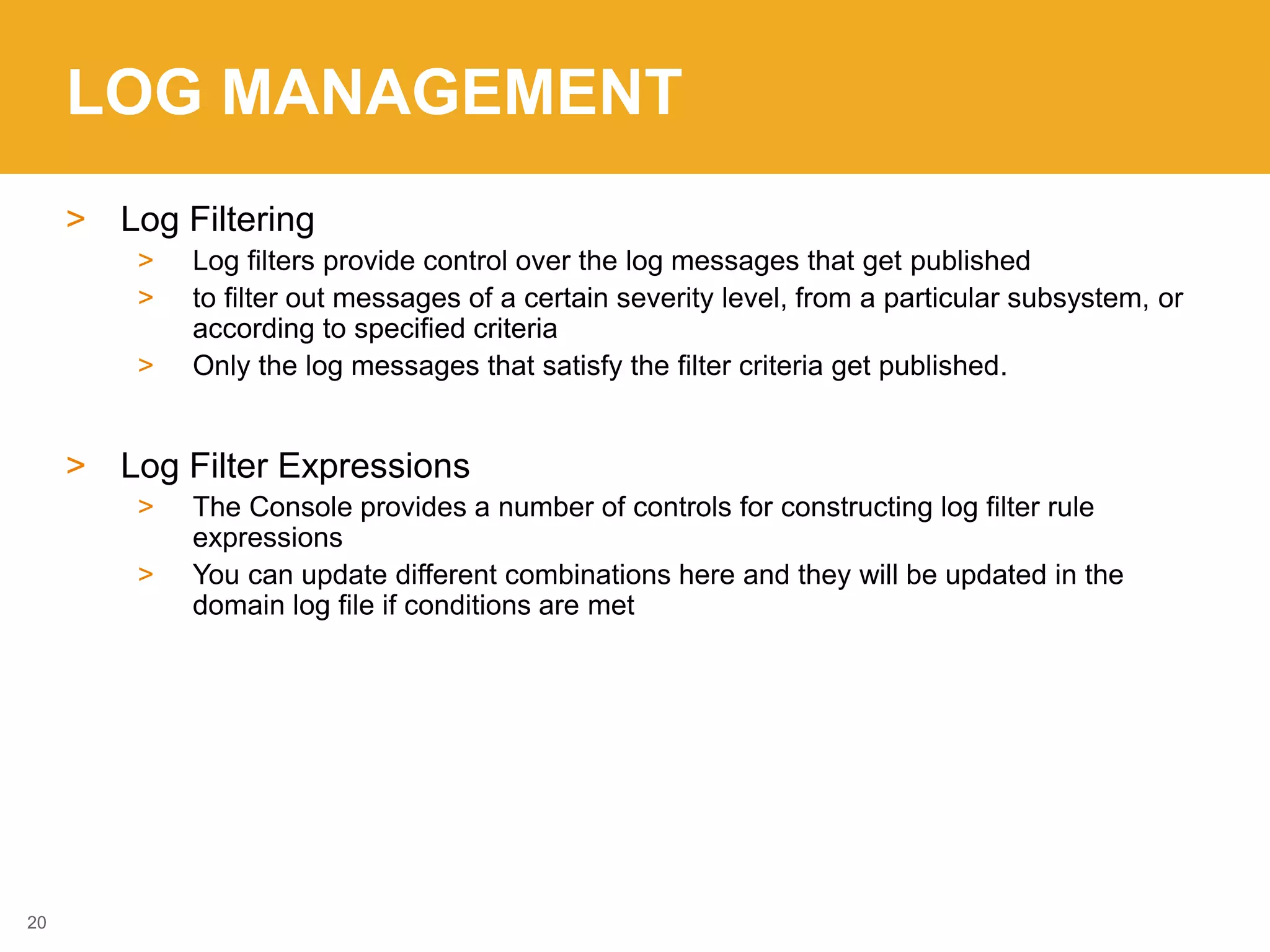

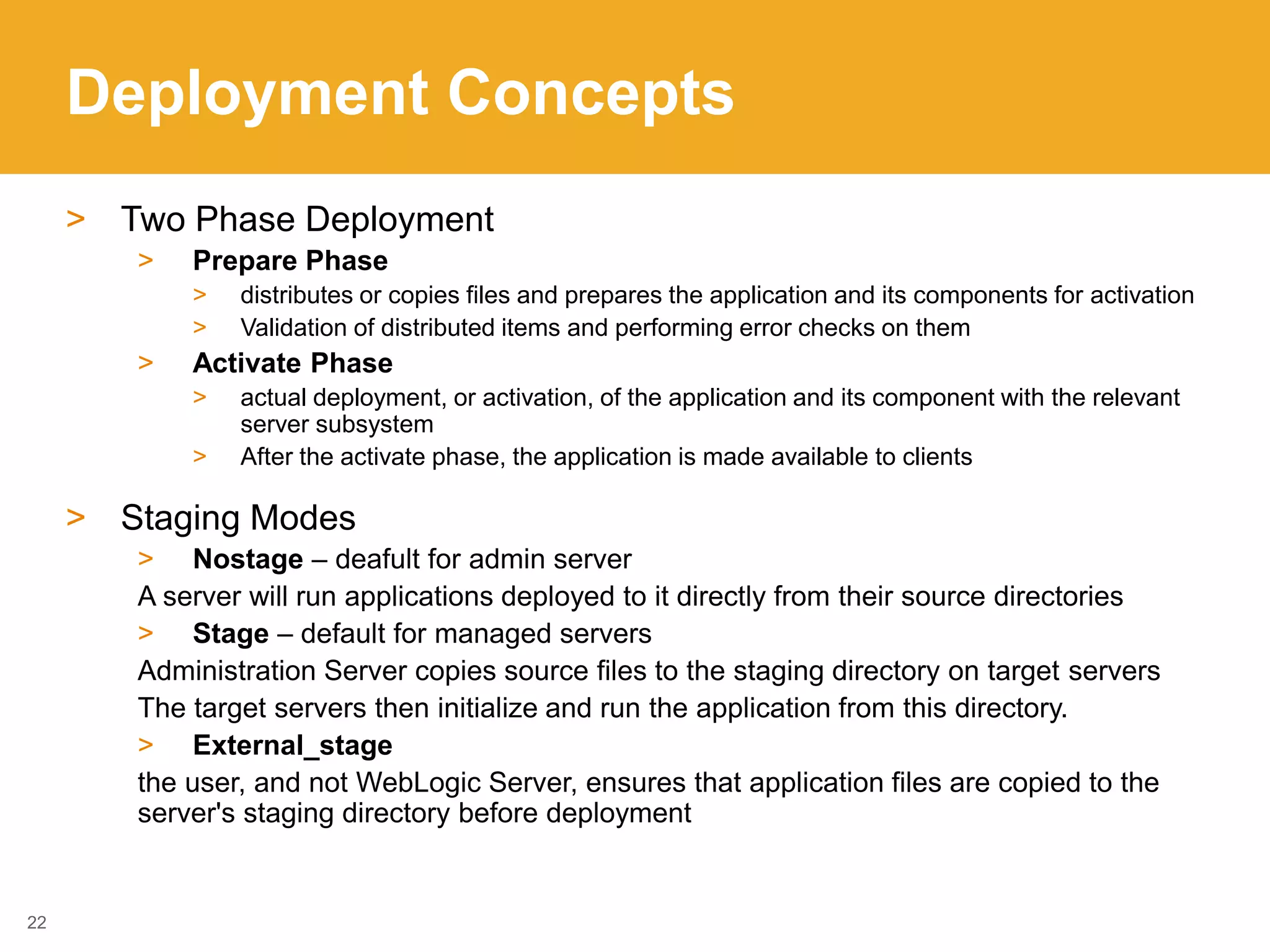
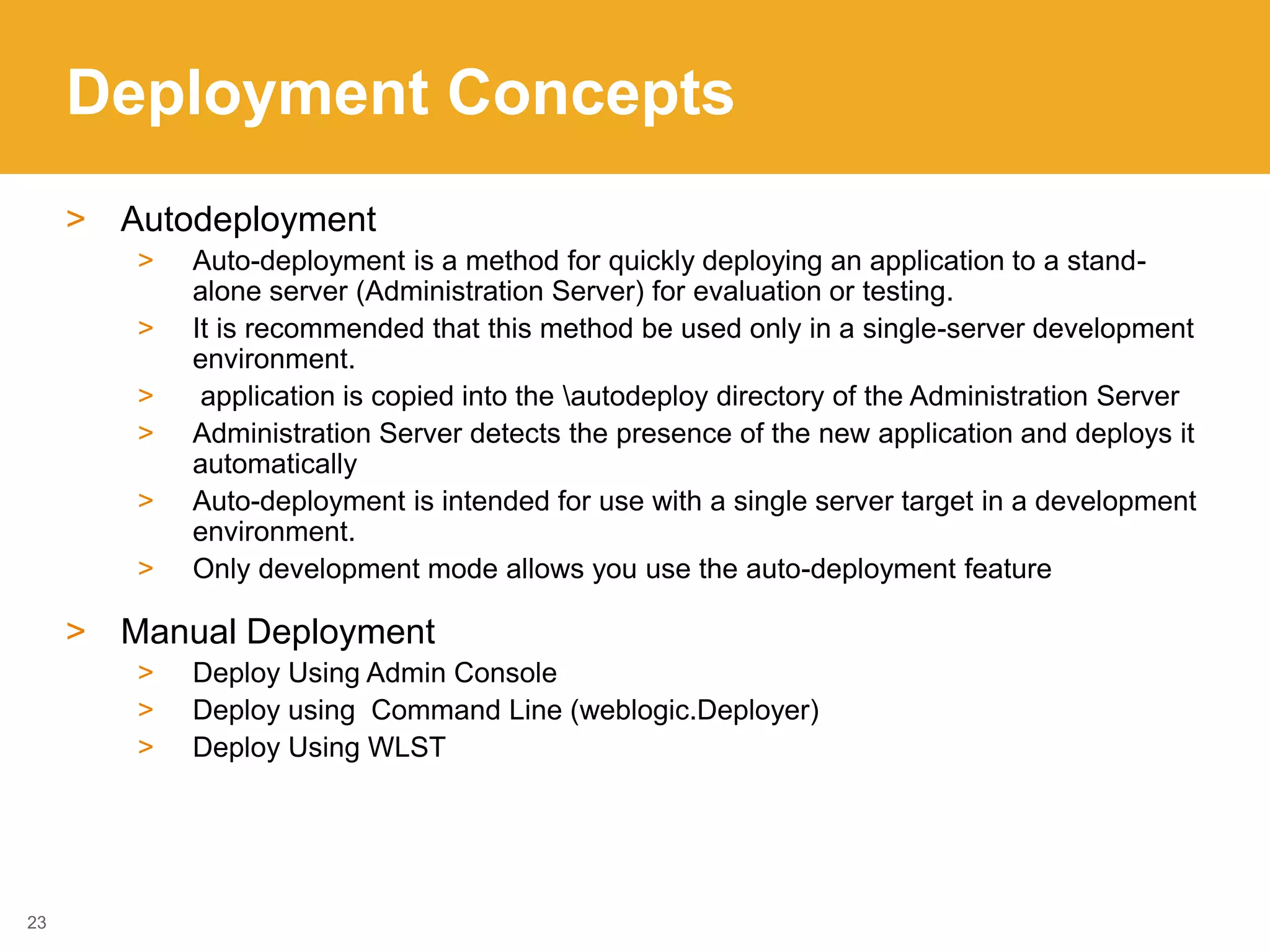
![Deployment Concepts
> Deployment Using Administration Console
> Login to Console
> Got to deployments link and from there you can delete/install/update the
new/existing applications
> Deployment Using Command Line (weblogic.Deployer)
> Set up your local environment so that WebLogic Server classes are in your
system CLASSPATH and the JDK is available. You can use the setenv script
located in your server's /bin directory to set the CLASSPATH.
> java weblogic.Deployer [Connection Arguments] [User Credentials Arguments]
COMMAND-NAME command-options [Common Arguments]
> Example
> java weblogic.Deployer -adminurl http://localhost:7001 -username weblogic -password weblogic -
deploy c:localfilesmyapp.ear
> java weblogic.Deployer -adminurl http://localhost:7001 -username weblogic -password weblogic -
deploy -targets ManagedServer-1,ManagedServer-2 c:localfilesmyapp.ear
24](https://image.slidesharecdn.com/weblogicapplicationserver-170111034446/75/Weblogic-application-server-24-2048.jpg)
![Deployment Concepts
> Deployment using wlst
> Deploy, undeploy, and redeploy applications and standalone modules to a WebLogic
Server instance.
> Start and stop a deployed application.
> Syntax for deploying:
> deploy(appName, path, [targets], [stageMode], [planPath], [options])
> wls:/mydomain/serverConfig/Servers> progress= deploy(appName=‘AnyApp',
path=‘/usr/local/opt/myapp',createplan='true')
> wls:/mydomain/serverConfig/Servers> deploy('demoApp', 'c:/myapps/demos/app/demoApp.ear',
targets='myserver', planPath='c:/myapps/demos/app/plan/plan.xml', timeout=120000)
25](https://image.slidesharecdn.com/weblogicapplicationserver-170111034446/75/Weblogic-application-server-25-2048.jpg)
![Deployment Concepts
> listApplications
> wls:/mydomain/serverConfig> listApplications() – Shows a list of all apps deployed in wls
> Redeploy: Reloads classes and redeploys a previously deployed application.
> redeploy(appName, [planPath], [options])
> wls:/mydomain/serverConfig> progress=redeploy('myApp' 'c:/myapps/plan.xml')
> wls:/mydomain/serverConfig/Servers> progress.getState()
> startApplication
> Starts an application, making it available to users. The application must be fully configured and available in
the WebLogic domain.
> startApplication(appName, [options])
> wls:/mydomain/serverConfig/Servers> startApplication('BigApp', stageMode='NOSTAGE')
> stopApplication - Stops an application, making it unavailable to users.
> stopApplication(appName, [options])
> wls:/offline> stopApplication('BigApp')
> undeploy
> undeploy(appName,[targets],[options])
> wls:/mydomain/serverConfig> undeploy('businessApp', timeout=60000)
26](https://image.slidesharecdn.com/weblogicapplicationserver-170111034446/75/Weblogic-application-server-26-2048.jpg)

